- About Sailonline

The One Source For Yacht Charters And Charter Yacht Ownership

- What is boat chartering
- Choose your best charter type
- Choose your charter company
- Choose a cruising area
- Choose the right boat
- Booking your charter
- Your sailing resume
- Yacht Charter Destinations Chart
- Catamarans vs. monohulls
- Bareboat Destination Skills
- Sailing Area Table
- Caribbean weather info
- What to pack for your charter
- Charter boat checklist
- Internet access on charter
- Briefing your charter crew
- Saving money on charter
- All boat charter tips in 1 file
- Budget Charter Fleets
- Provisioning a charter boat
- Booking directly with a boat owner
- The charter days you really get
- Managing your boat on charter
- Boat charter with kids
- Seasickness tips
- Starting a charter from the USVI
- If you damage a charter boat
- Flotilla charters
- Charter with a handicapped child
- Crewed yacht charter myths
- Organize a crewed charter
- Crewed charter tips
- Browse The Database
- Submit your Boat Listing
- Yacht Management Contract
- Buying a boat with a partner
- Bareboat vs. crewed yacht
- Charter Yacht Phase-out
- Phase-out punch list
- Yacht & Marine Surveyors
- Charter Boat Owners forum
- Yacht financial management tools
- 2nd tier fleets financial comparo
- Active ownership FAQ
- Layman guide to charter boat ownership
- Is Buying A Charter Boat For You?
- Buying a used charter boat
- Yacht buyer representation
- Bareboat vs. crewed yacht ownership
- Active Yacht Ownership
- Customers' Testimonials
- Cruising Logs
- Captain licenses
- 'Heaving to' maneuver: A must
- Charter Boat Seamanship Manual
- Yacht Crew Certification: All answers
- Snorkeling & kayaking safely
- Rules of the Road
- MOB Crash-Stop Maneuver
- 5 Knots you must know
- Flag Etiquette
- Emergencies on charter
- Distress calls at sea
- Navigation on a yacht charter
- Navigation aids sheets
- Estimate distances at sea
- Heavy weather basics
- Caribbean weather information
- VHF use: The basics
- Raising Main Sail | UnPC
- Anchoring technique & hand signals
- Catamaran sailing tips
- Docking: Avoid the embarrassment!
- Mooring technique
- Med-mooring technique
- Dinghy handling: make the best of it!
- Reefing a Catamaran
Remember Me
- Forgot your password?
- Forgot your username?
- Create an account
Charter Boat Checklist

When you arrive at the base for your charter, unless you have the luxury of a crew — in which case you will just step on board and cast off — you have some work to do to make sure your cruise will go smoothly. Here is a checklist of the most common items to verify. We've tried to make this list as exhaustive as can be, but if you want to add to it, please drop us an e-mail and we will add it to the list.
Food & Provisioning
• If you have ordered food either from the charter company or from a supermarket, you have to double check that everything is conforming to your order. Often, you realize you have too much of this or not enough of that. Most supermarkets and charter companies allow to exchange some items in order to accommodate your new arrangement.
• Make sure you have enough staples like paper napkins, paper towels, liquid soap, bathroom items, salt, pepper, sugar, cooking oil, ice.
• Stow food in the order that you will use it: most perishable and first to be used near the top, but near the cooling plate - But don't store lettuce or other veggies next to the cold plate.
Refrigeration
Make sure it is in working order. A good charter company will run the systems (engine or onshore power) before your arrival for you to find a cold freezer and fridge when you step on board. If it is cold plate system, the plates should be covered with a thin layer of soft ice.
Water Tanks
Charter Companies are supposed to give you a boat with full tanks. Well, I wrote: "Supposed". Sometimes, for whatever reason, this does not happen. So make sure you top off all your tanks yourself. Check that all faucets are working including the deck shower.
Before leaving the dock, start the outboard and check that it spits water. If it is an inflatable, make sure it is properly inflated and that you have an air pump on the boat. Check the gasoline level. The following should be on board the dinghy:
• Fuel tank - full • Wrist set • Bailing bucket • Paddles / Oars: are they in there and the right size with brackets? • Wrist/disconnect attachment set. • Long painter - the painter is the long rope that is attached to the dinghy for towing it, tying it to the boat or to a dock. • Cable with lock • Small dinghy anchor. • Safety line between dinghy hull and outboard in addition to the outboard clamps.
• Go to the bow, grab the anchor remote control or whatever device you need to make the windlass work, and try it both ways a couple of times. You certainly do not want to find out the anchor does not go back up when you have to leave an anchorage in a hurry. Or not for that matter — who needs to weigh a 40lbs anchor with 100ft of chain, right? • Is there a snubber?
Boat Tour by Charter Company Briefer
Pay attention to this , ask all questions you need, and have another person present. Pay particular attention to important items below:
• Location and operation of all sea cocks • Understanding of bilge pumps procedures, including manual pump • Location of flares and fire extinguishers • Windlass: electric and manual procedures in case of power failure • Location of anchor windlass reset button (if electrical system gets into an overload) • Location of spare anchor • Water tanks switching procedure • Location and operation of fire extinguishers • Testing of the stove and propane system with the briefer (propane tanks full?) • Operation of refrigeration systems and fridge drain • Understanding of the marine head(s) and holding tank procedures (to ensure they work, and to prevent them from clogging or flooding) • Understanding of the reefing procedure on this particular boat • Hoisting of the main a few feet to check it goes up and down freely • Unfurling of the head sail a couple of turns to check it furls in smoothly • Helm should turn freely • Location of the emergency tiller • Location of the First Aid kit (should be fully stocked) • Location of the tool box, with spare oil • Testing of the VHF and other electronics with the briefer present • 12 V outlet(s) tested • Location of engine oil stick and cooling water tank • Starting of the main engine and transmission testing, forward and backward, with the briefer present • Fuel and water tanks deckplate keys
• Get the latest forecast as well as the trend for the coming days. • Ask the base staff if there is anything in particular you should know for the duration of your cruise — strong winds expected, expected change in the usual patterns, etc. • If your charter is during the summer months in the Caribbean, ask the base staff what the procedure is in case there is a tropical storm coming and they have to recall the boats back to the base. • Get all the radio frequencies you need to check the weather daily. If you are chartering in the Caribbean, visit our Caribbean Weather info for all the information you need.
• Flashlights working? Enough batteries for the flashlights. • WD 40 or some kind of lubricant • Boat hook • Dock lines • Main companionway locking key • All necessary charts, cruising guides on board. • All life jackets on board, including for the kids. • A couple of windscoops for improved cabin ventilation. • Snorkeling gear on board. Fin sizes fit? • Boat documentation, cruising permits (if necessary) in order? • Ask crew to have everything properly stowed and nothing lose in cabins • If you are cruising the Caribbean and are planning to visit several islands which involve actually changing "countries": have your crew list in several copies to avoid having to rewrite the same information several times over. • Check for special events in your area. • If this is your first time, or if you're not too experienced, make sure your first sailing leg is not too long for your first day, in order to be at the anchorage around 0300 at the latest.
The faster you get this necessary stuff done, the faster you can get out and to your first anchorage. This takes some coordination, as you can see, but it is imperative that all this be accomplished to have a safe and pleasant cruise.
- PREMIUM FILES
- Pre-Owned Yachts
- Charter Boat Owners/Buyers Forum
- Favorite Links
Copyright ©2000 - 2022 Sailonline.com. Unauthorized reproduction prohibited. Sailonline is not affiliated with any charter company.

- Find A School
- Certifications
- North U Sail Trim
- Inside Sailing with Peter Isler
- Docking Made Easy
- Study Quizzes
- Bite-sized Lessons
- Fun Quizzes
- Sailing Challenge

Bareboat Charter Checklist
By: Zeke Quezada, ASA Charter , Cruising Tips
It was not that long ago that I boarded my first ever bareboat charter. The excitement with which we approached the catamaran is something I still feel today. This was to be the greatest vacation of our lives. The top of the bucket list was going to be checked off.
A bareboat charter with my family.
The dream of this sailor.
Yes, it was the greatest trip we had ever taken up to that point. Our subsequent bareboat charters have surpassed our first as our favorite but the very first time on a catamaran in the Caribbean is still a lifelong family memory that will last our lifetime.
However…we made a few mistakes. A blown fuse meant that we had to pull up an anchor by hand. (Not easy) We fouled a prop and had to cut off the line with a serrated bread knife. We ran out of rum, twice.
Here are a few tips on things that you can do before you toss the lines on your first bareboat charter
These tips are from “ A Sailor Gets a Refresher Course” by Peter Isler, American Sailing Board Member
Ahead of time:
These are things to ask the charter company when you are planning your trip – before you start to pack or shop for provisions.
- Confirm what kitchen utensils and staples are on board. Make a list like you would for going camping and run through that list with the charter company.
- Confirm how you are going to make coffee or tea underway and at anchor. Our boat had an electric AC drip coffee maker – great at the dock – but pretty useless and cumbersome when underway or even at anchor.
- Confirm what bedding will be on board. An extra blanket can come in handy on a winter night at anchor.
- Is there a barbecue? Are all the necessary supplies also included?
- Towels & soap. Imagine cruising for a week with one tiny cheap motel room towel (our boat had great towels) and a tiny bar of soap. You may have to bring your own rubber ducky!

When you check out the boat:
- Video the briefing on your phone (at least the key parts like the electric panel and major systems engine operation). Because it’s guaranteed you will forget some simple little step in some important system.
- Make sure your full crew attends the briefing – not just the designated skipper and experienced sailors… that way you don’t have to teach everyone again later.
- Safety Equipment – from life jackets to fire extinguishers – make sure you are the world’s expert in your boat’s safety stuff.
- Operation of all the boat’s systems Engine, Water, LPG, Heads, Charging etc. This is one you will probably want to video for review… it took me a few days before I was really facile with switching from “shore/mooring” mode to underway mode.
- Docking – every boat has its own unique low speed motoring characteristics – don’t be too proud to ask for tips from someone who has run the boat before. Docking/mooring/anchoring can be the most stressful time of your whole cruise – so do all you can to set yourself up for success.
- Extra line and tools. Know what your supplies are on board – and ask the charter company for more if you think the supplies are too thin.
- Fuel and Water levels and expected consumption. You don’t want to be stressing about this stuff underway.
- How to moor the boat and how to anchor the boat. Run through all the systems and get the tips from someone who has done it before – they are probably experienced in the mooring situation where you are going cruising so make sure you get all the info. Also ask how/if the anchor chain (or rode) is marked for judging scope.
- Charter Resources
- Your First Charter Sailing Vacation Today bareboat chartering is the culmination of your sailing education. When you walk across the deck and get your sailing diploma you step on to the metaphorical boat of your future and you can sail it anywhere you want!
- Charter Sailboat Resources Whether you have just begun to sail and have recently earned your ASA 101 certification or if you have already mastered ASA 114 and are a veteran of bareboat charters this resource should help you.
- Bareboat Charter in the BVI Getting aboard your bareboat charter is the goal when you get your ASA sailing certifications. Where do you begin? For many, it is a sailing vacation in the British Virgin Islands.
- Choosing a Charter Boat Company It’s time for you to set off on your own and explore endless shorelines and secluded coves. You have mapped out your plan and you have reserved your vacation time now all you need is a boat. How do you choose a charter company to rent a boat for a week?
- Choosing The Right Boat for Your Sailing Charter When you decide to take a sailing vacation aboard a sailing vessel that you will call home for a week or two you’ll be surprised by just how much you think you need.
- Sailing in Europe? Chartering overseas is on the bucket list of many a sailor, but making it happen comes with a stipulation or two. A sizable number of countries require an International Proficiency Certificate that lets them know the charterer is trained, qualified and prepared to take one of their boats out to sea.
- Find a Sailing School and take sailing lessons to improve your sailing skills.
Related Posts:

- Learn To Sail
- Mobile Apps
- Online Courses
- Upcoming Courses
- Sailor Resources
- ASA Log Book
- Bite Sized Lessons
- Knots Made Easy
- Catamaran Challenge
- Sailing Vacations
- Sailing Cruises
- International Proficiency Certificate
- Find A Charter
- All Articles
- Sailing Tips
- Sailing Terms
- Destinations
- Environmental
- Initiatives
- Instructor Resources
- Become An Instructor
- Become An ASA School
- Member / Instructor Login
- Affiliate Login
- CHARTER YACHTS
- CREWED YACHTS
- Bareboat Charter
- Skippered Charters
- Crewed Yacht Rentals
- POWERBOAT or MOTORYACHT CRUISING
- HOUSEBOATING
- SAILBOAT CHARTERS
- CATAMARAN CHARTERS
- SAILING DESTINATIONS & ITINERARIES
- CHARTER GUIDE
YACHT CHARTER CHECKLISTS FOR DOWNLOAD
New boat listing.
Good preparation and organisation are key to plain sailing vacation! Our sailing charter checklists will help you to plan your cruise easily and effectively.
If it's your first time chartering a yacht we can assist you with our first time yacht charter - step by step guide .
If you need help, feel free to have a look at some pages we provide for you so that you can easily plan and organize your yacht charter vacation.
- Which license is required for bareboat charter ?
- Do I need a visa ?
- What kind of insurance should I choose ?
- all you need to know if you are the Skipper, you'll find in our Skipper Guide
- for more info, please have a look at our Yacht Charter FAQ - Frequently Asked Questions
CHARTER CHECKLISTS FOR YOUR NEXT YACHT VACATION HOLIDAYS
Here you have the possibility to download some checklists for your next cruise free of charge! Handbooks, guides, planning checklists - What to pack for a bareboat sailing charter, which documents to take with you for yacht charter holiday - checklists you can use before and while you go for a sailing vacation.
- YACHT CHARTERS & RENTALS WORLDWIDE
- Offer your Yacht
- B2B partner area
- Terms of use
- Privacy policy
Using this site requires JavaScript. You are either using a browser that does not support JavaScript or has JavaScript disabled. Please click here for detailed information.
- Inspecting your rental boat: a complete checklist and guide
Taking over the boat before you set sail is one of the most important tasks if you want your voyage to go without a hitch. But, if you were to check absolutely everything, you probably wouldn't end up sailing at all. Therefore, it's best to focus on the key items and equipment. We'll take you through a complete checklist of what to inspect and look for on your charter yacht.
Check-in at the marina: taking over the boat
Inspecting your rental boat at the marina can be divided into two main parts — external and internal inspection. The first thing you should do is turn on all the necessary switches in the saloon on the dashboard (the ones that make sense and won't trigger an unwanted operation, such as running the pump at idle, etc.).
Inspect the exterior of the boat: 10 things not to miss
1) hull and deck.
After turning on the switches, continue with a visual inspection of the deck, sides, stern and bow . Take a smartphone or camera with you and go around the entire outside of the boat, taking photos of any visible scratches (if you do not have a brand new boat, there will always be damage). Take a closer look at the edges of the boat at the stern and on the sides (these are prone to impact/abrasion from jetties due to insufficient use of fenders), the bow (charters look at bows a lot because they are relatively expensive to replace) and the bow area near the anchor (the bow can get damaged, especially by the anchor).
2) Engine – test its operation and shifting gear
Start the engine. Make sure it starts up without any problems. Shift to forward , try to accelerate, shift to neutral , shift to reverse and try accelerating again. Shifting gear should be smooth and you should always feel the transition between neutral, forward and reverse. Check that you can rev the engine in neutral to charge the batteries and make sure the engine is cooling down (the engine blows water from the exhaust).
3) Anchor and anchor windlass
Leave the engine running and go to the bow to check the anchor. Inspect the anchor-chain connection, the anchor itself and its position in the anchor mount (check the condition of the anchor, whether it is damaged, whether it is properly mounted, whether the mount is damaged, whether the end of the chain is securely attached to the anchor). Check the anchor controls and try lowering and raising the anchor.
YACHTING.COM TIP: What is the whole check-in procedure like? Find out everything you can expect when taking over a rental boat at the marina, what the charter company will need and how the check-in process works in our article — Charter boat check-in: a step-by-step guide . Plus, we've included tips on what to consider before signing the contract and the preparations to make at home before setting sail.
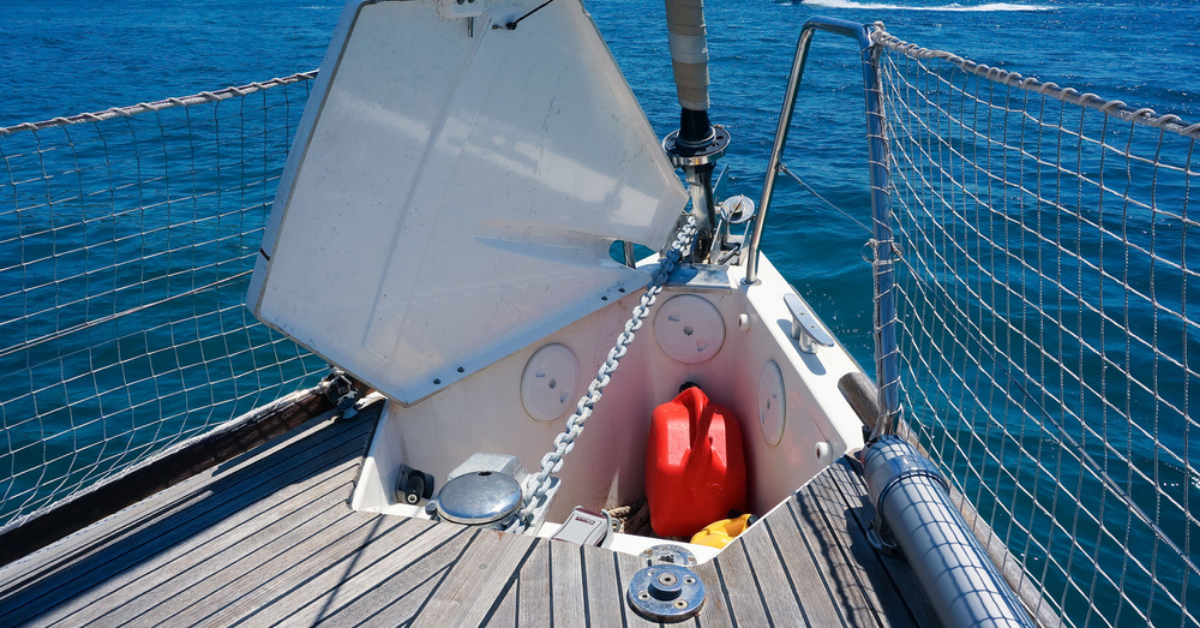
4) Rigging (sails, ropes and sailing-related items)
Weather permitting, hoist the sails one at a time. If the conditions don’t allow it, agree with the charter company that you will check the sails when first hoisted and if damaged, you’ll return to the marina. Or if the damage is minor and doesn’t impede sailing, you’ll provide photos (here it is up to the individual charter company to decide). If the sails are damaged, insist that they are repaired or replaced.
Check the lines (if they are frayed, insist they are replaced), winches (whether they are damaged and whether they operate smoothly), stoppers (whether they open/close well, whether they properly secure the lines), the boom mast attachment (whether there is a missing bolt nut or cotter pin). Visually inspect the mast, boom, the shrouds and the fore and aft stays for damage.
YACHTING.COM TIP: Have you ever considered renting a gennaker — the most common speciality sail seen on charter boats? When you rent a boat, you don't automatically get a gennaker as standard and is usually handed to you at check-in packed in a bag for you to rig and hoist yourselves. This may sound complicated, but there's really nothing to worry about — find out more in our article on 5 reasons to rent a gennaker .
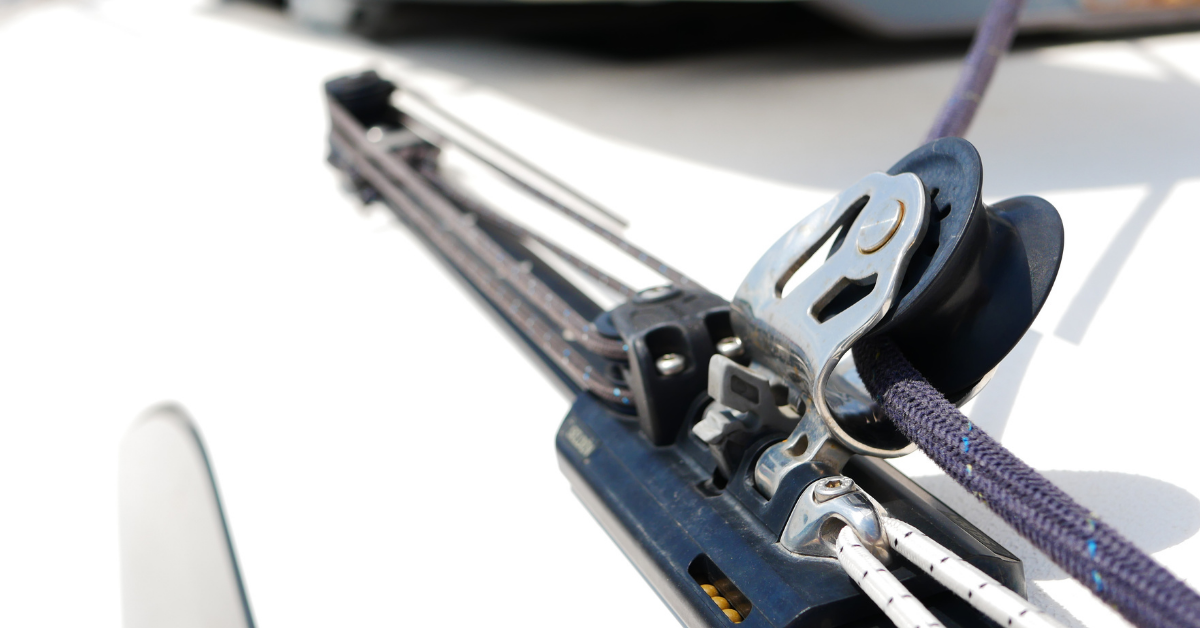
5) Onboard equipment
Check the instruments on board — the marine plotter, depth indicating instruments (check whether depth is measured from the waterline or from the bottom of the keel), wind direction and speed, and autopilot data. Check the lifebuoy and rescue light buoy (that everything is properly packed, that the line is properly attached to the buoy and boat, that the light turns on when lowered). Find out where the life raft is located (mandatory boat equipment for navigation in the area B — 200 NM from the coast). Check the onboard lights (position lights, engine light, stern light, deck light shining from the mast to the front of the deck).
6) Rudder and autopilot
Check the operation of the steering wheel(s) and the autopilot to see if it takes control of the rudders (try setting 10 ° to starboard and port and check it turns the rudders). Do a visual check of the rudder blade(s) (if you can see them from the jetty).
7) Outboard motor
If you are hiring an outboard motor , check that it is firmly attached to the railing and that there is a kill cord . Test it briefly on the mount by starting it , giving it some throttle and killing it .
Check that the dinghy is not damaged and that it is sufficiently inflated (no air leaks). If it is not sufficiently inflated, try to inflate it and see if any air is escaping.
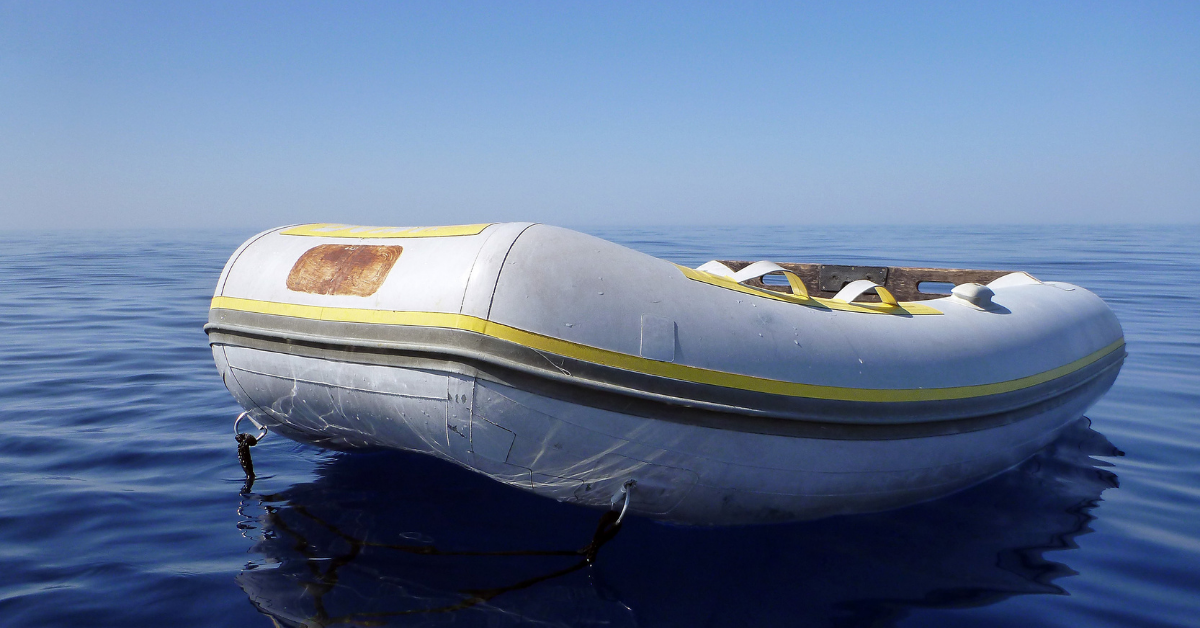
9) Cockpit lockers
Check the equipment in the cockpit lockers, including the storage space under the cockpit/helm floors. In the storage compartments, you should find a reserve tiller, reserve anchor, lines — especially a long anchor line (approx. 50 m) for mooring to the shore, a lever for the hand bilge pump (often attached to the bottom of the locker lid), a bucket, a scrubbing brush, water hose, paddles, a pump for the dinghy (try out the pump!), and a life raft .
10) Gas cylinders
Check the condition of the gas cylinders (whether they are full — feel the weight of the cylinders in your hand, whether the hose is worn, whether the valve works — turn on the valve and go test the stove and oven).
Read more interesting facts and information about boats and boat equipment:
Advanced sail trim techniques
The ultimate yacht cleaning kit
The most popular catamarans of 2023
How to sail a yacht on a tailwind
How to sail a yacht in crosswinds
Götheborg: the greatest sailing ship
New boats for rent in 2024
Sail trim 3: become a pro
Sailing through time: a history of sailing ships
Check the interior of the boat: 10 things to look for.
Turn on the gas at the stove (usually, you need to turn on the gas cylinder valve first and then under the stove/near the stove). Using a lighter or matches to light the flame. Gradually test that all hobs and ovens work . Check the galley cooking utensils.
2) Refrigerator
Check that the refrigerator is cooling and that the temperature can be regulated (if the fridge has the option). It is said that during summer, the refrigerator is the second most important thing on the boat after the engine.
3) Safety equipment
Check the number, location and condition of life jackets and harnesses . If you're sailing with children, make sure there are enough life jackets on board for both children and adults and whether the life jackets are large enough for the bulkier crew members. The number of lifejackets on board should the same as the capacity of the boat (one spare may be required). There are not usually enough harnesses on board for the entire crew (depending on the type and difficulty of the voyage, harnesses may be required for the entire crew).
Whether you're sailing with your own kids or your friend's, the trip and the boat need to be adapted slightly to ensure that everything goes smoothly and, above all, safely. Take a look at the most important guidelines to follow in our article — Sailing with kids: how to keep all of you safe and happy .
Find out about the location of fire extinguishers, fire axes and stay/shroud cutters . Check the signal equipment — flares and day shapes (cone and sphere). Find out where the first aid kit is and check its contents. Find out where the bosun’s chair is (if it isn’t is not on the boat, request it).
4) Navigation equipment
Check the navigation equipment — charts, navigation aids (compass/dividers, ruler, pencil, eraser), pilot/guide for the area .
YACHTING.COM TIP: Man Over Board (MOB) is something no sailor wants to experience. But when it happens, you need to know how to react quickly and correctly, because lives are at stake. Both the skipper and crew are under enormous stress the moment someone falls into the sea, so it is crucial to know the different steps to take and understand your role during a rescue operation. Find everything you need to know in Man Over Board (MOB): a step-by-step guide .

5) Toilets (the head)
Check that the toilets flush properly and that there is no water leakage around the toilet. Find out if there is a waste holding tank on board and where the cock is to drain it.
YACHTING.COM TIP: One of the important amenities on a boat is the toilet, known as the "head". Everyone can use one at home, but marine toilets are very specific. So, what different types of toilets can you find on a boat? How do you flush it? What can or can't you put down the toilet? How do you avoid spilling the contents of the tank, or sort out a clogged toilet? Find out the answers to these questions and more in our guide — Marine toilet: how to use it .
6) Water and tanks
Make sure that water flows and drains well everywhere in sinks and showers. Find out where to turn off the water and waste pipes . Ask about the location of the water tanks, how and where to switch water tanks (if there are multiple water tanks on the boat)and where the tank filler is . Ask if the tanks have been topped up (topping them up can help you determine if they are full).
7) VHF and other electrical equipment
Check the radio transmitter functionality — on/off, channel tuning/squelch test. Check the functionality of WiFi on board (if you’ve paid for it). Check the functionality of the sockets the fuel and water gauges and their condition. Don't skip the boat's switches — that they work, that they stay in the on/off positions. Ask about switches you don’t know the function of. Find out about the location of the main circuit breakers — the battery switches, the anchor windlass and the main power switch on the boat. Check the lights inside the boat .
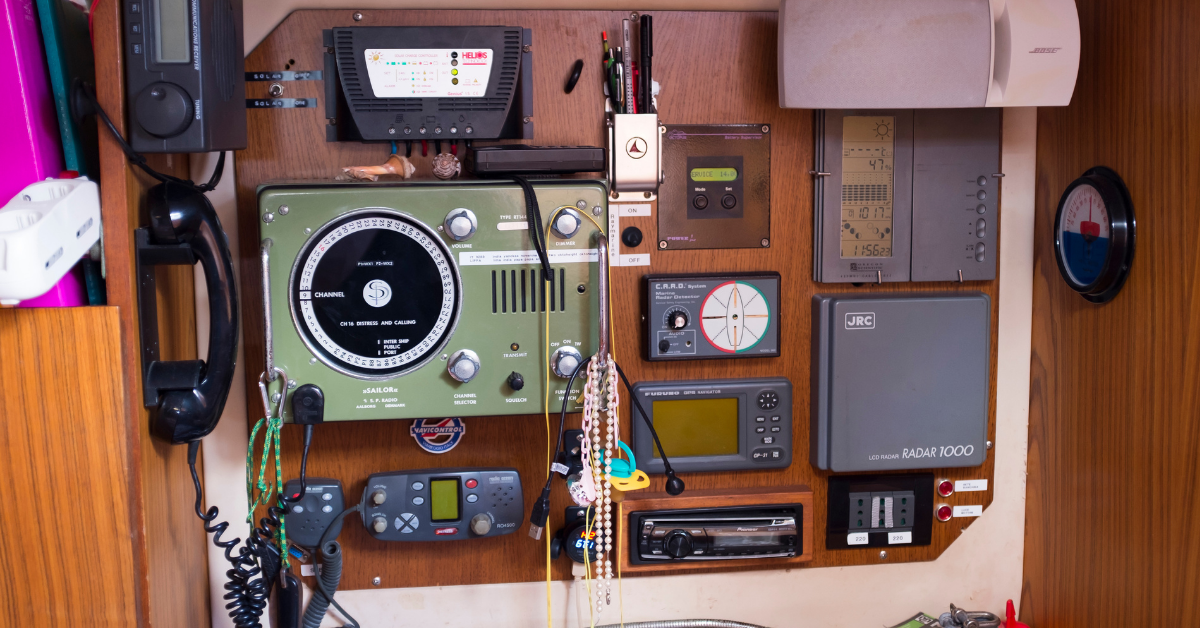
Have you already chosen a destination for your voyage?
Discover the best of the Balearic Islands
From Lefkada or Corfu to Paxos and Antipaxos
Discover the paradise of Paxos and Antipaxoss
Discover Corfu: sailing adventure in the Ionian
5 best sailing routes in the Bahamas
Yachting guide to the Bahamas
Sailing the Maldives: paradise
Croatia in autumn? A definite yes!
Top marinas in Montenegro
Yachting without crowds
Top marinas in Croatia
Yachting and accessible hiking routes
Greece's marinas: an insider's view on the top 3
Croatia 2023: prices, borders and news
Yachting in France
Waters for experienced sailors
8) boat documents .
The boat documents include the technical inspection certificate , a permit to sail in the area, a crew list and the boat's insurance (concession document). Require the charter company to provide you with a contact person in case any problems arise.
Open the engine compartment (most often found under the stairs to the saloon). Check for oil leaks — make sure the engine is not leaking and the area under the engine is dry and clean, you can also check the oil and coolant (dipsticks/gauges similar to as in a car), the tension of the V-belts if they are not covered under the hood (all the above-mentioned checks of fluids, engine condition and engine parts should have been performed by a charter company technician). Determine the location of the fuel tank filler . Ask if the tank is topped up and check the fuel gauge (unfortunately, neither the charter company nor the fuel gauge can often be trusted). If you want to be sure that the fuel tank is full, go to a filling station as soon as possible and refuel (this is the only way to be sure).
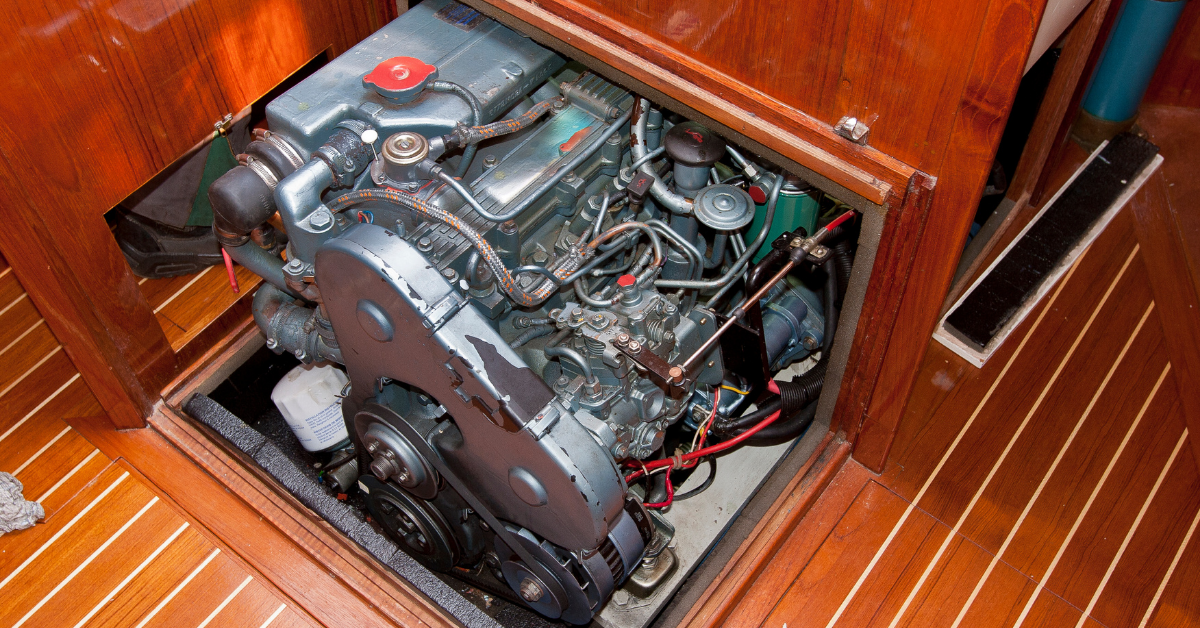
10) Tools and spare parts
Find out where the tools and spare parts for the engine are located. Check what tools there are.
YACHTING.COM TIP: A thorough boat takeover is not just a matter of minutes but once you set off, your holiday sails by and it's almost over before it starts. So how can you get the full benefits and catch all the fun? We've put together 10 good reasons to go sailing for at least 14 days .
Checklist summary: what to inspect when taking over your boat at check-in
Exterior
- Hull – deck, sides, bow, stern
- Engine – shifting, cooling
- Mooring – anchor, controls, windlass, chain
- Rigging – sails, lines, winches, stoppers, boom, mast
- Onboard equipment – instruments, lifebelt, life raft, lights
- Rudder – steering wheel/tiller, blade, autopilot
- Outboard engine – mounting, kill cord, start, throttle
- Dinghy – inflated?
- Cockpit lockers – contents of lockers and helm compartments (tiller, anchor, lines, bilge pump lever, hose, paddles and pump, life raft)
- Gas cylinders – fullness, valve, spare
- Cooking – hob, oven, kitchen utensils
- Refrigerator – cooling
- Safety equipment – life jackets, harnesses, fire extinguishers, axe, stay/shroud cutters, first aid kit
- Navigation equipment - maps, navigation aids, pilot for the area
- Toilets – flush, no leaks
- Water and tanks – water flows, drains well, switch tanks
- VHF and other electrical equipment – VHF, Wifi, sockets, boat switches, main breakers, lights
- Paperwork – technical certificate, permission to sail, crew list, boat insurance, concession document, emergency contact
- Engine – dry and clean, fuel filler
- Tools and spare parts – types of tools, individual parts
YACHTING.COM TIP: In addition to checking the boat thoroughly when taking it over, a packing checklist for your boating holiday comes in really handy — Sailing essentials: don't forget to pack these things .
Are you enticed by the article and want to get on the boat too? Contact me directly.

Denisa Nguyenová
Faq: what to check at your boat check-in.
- Skip to content
Knowledge for Sailors
Sailing Packing Checklist
Bareboat Charter , Gear / January 9, 2015 by TJ / 6 Comments
Updated 30-Nov-2019
I use this checklist when I am packing for a sailing trip. I go through the checklist to remind me about everything I might bring; everything I don’t need I just check off and move on . If I’ve needed it once it’s on the list; this is meant as a list of ideas not a list of requirements.
The provisioning checklist is separate; mostly consisting of food and miscellaneous things that will be consumed during the trip and can usually be bought for the trip.
- Personal Water Bottle
- Water Shoes
- Climate appropriate clothes for each day
- Zip convert pants
- Long Sleeve Shirts
- Sailing Boots and Gloves
- Sleeping Bag
- Lightweight Rain Gear
- Mask, Snorkel and Flippers
- Sailing Gloves
- Light Linens
- Seasickness Medication
- Personal Medication
- Multivitamins
- Leave-in Conditioner
- International Drivers License
- PADI or NAUI diver card
- Camera Gear
- Phone Headset
- Headphone Splitter
- Flash Light
- Small Dry Bag
Skipper Gear
- Coast Guard License
- ASA/US Sailing Membership Card
- ASA/US Sailing Logbook
- International Proficency Certificate
- VHF Certificate
- Utility Knife
- Marlinspike
- Digital Watch
- Satellite Messenger and/or Satellite Phone
- Charging bricks
- All the extra batteries
12V DC to USB Charger
- Powerful Flashlight
- Smartphone or Tablet
- Download the Charts!
- Handheld VHF
- Refrigerator Thermometer ( affiliate link )
- AUX Stereo Cable
- Handheld Depth Sounder
- Outlet adapters
- Multi-meter
- Radar Reflector
- Antibiotic ointment
- Waterproof band-aids
- OTC Anti-inflammatory
- Cruising Guide(s)
- Bosun’s Chair
- Squishable Cooler
- Hand Sanitizer
- Scrap Paper
- Air Freshener Spray
- Clothespins (& Clotheslines)
- Flotation Devices
- Glow sticks
- Cockpit night light
Sleeping Bag, Pillow and Linens
Sleeping bags and linens take up a lot of space so it’s good to find out if they’re provided by your host or chartering company. I’ve never been on a charter boat that didn’t include light linens and pillows.
For safety purposes you want this headlamp to continue working after submersion so you’re visible if you fall overboard. Look for something that is rated IPX67 or better. You also want a headlamp with a red LED that you can turn on and off without cycling through a night vision killing white LED. Unfortunately there is no easy way to tell if a headlamp meets this criteria without getting your hands on one.
I just ordered this headlamp ( affiliate link ) for an Antigua bareboat charter and will update this after I give it a try (it was great, recommended to friends who are also pleased. Just bought another because I misplaced my original)
If you’re doing night sailing each crew should have a suitable headlamp. If you’ll be tied up at night and only need to manage trips to and from shore you can get by with two or three headlamps on a boat.
Ear Plugs are invaluable for sleeping at a noisy slip or with a crew that snores. They can also help prevent ear infections if you’re prone to them. After sleeping a night with earplugs in I always appreciate having a Q-tip handy.
I like silicone earplugs and have used Macks earplugs ( affiliate link ) for decades. They’re waterproof so you can use them to help prevent ear infections if you’re swimming and they’re very comfortable. The downside is dirt and sand work their way into the silicone so once they’re dirty you need to replace them; I always bring spares.
If the stereo has an auxiliary port you it’s easy to listen to music from any music player with a headphone output. Sometimes in the boat specs it’s clear:

Other times it’s not clear:

My sailing friends and I estimate that any boat built since 2005 will probably have an auxiliary input. If you’re worried you can bring a backup FM Transmitter. You can also call or email and ask. Or check it out for yourself.
Make sure you get the AUX cable with 3 contact cylinders, not 4. Four cylinder terminals won’t work with older radios but any new audio device will work with 3 or 4 cylinder terminals. I have this model by amazon ( affiliate link ).
Sailing Watch
I strongly recommend using a watch with a timer alarm for longer sails, especially at night. When you use a timer you can give yourself a time frame to re-check something and have the timer alert you when that time has come. This is even more useful at night where frequently looking at electronic screens can ruin a helmsman’s night vision.
Water Bottle
Each of the crew should have their own water bottle. Something that they can fill up ashore when fresh water is available to conserve the boat’s supply.
I bought a platypus ( affiliate link ) a few years ago and now I have three. I love the ability to take them ashore when they’re empty without using much space and fill them up. Plus they take up less space in my luggage or day pack if I am traveling or exploring. If I am doing anything more than a weekend trip I usually bring all three of them. They can be tricky though, they tend to fall over if you set them somewhere without closing them and drinking from them takes a bit of getting used to.
Of course you want to bring your Personal Flotation Device. Just make sure it’s allowed if you’re flying .
Most devices you need to keep charged sailing can be charged via USB. A cigarette lighter to USB adapter ( affiliate link ) adapts the usual 12V DC outlet found on most boats to USB ports. The more ports the better.
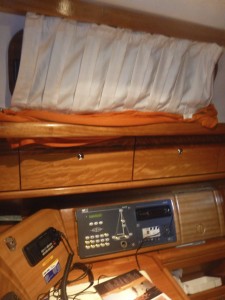
Yes, I know “towel” is on the checklist twice. A towel is the thing I always forget to bring even if I lay it out to pack. I’ve dried myself off so many times using my clean shirt because I’ve forgotten to bring it into the shower with me. “Towel” is on the checklist twice.
I really like “tech” towels. They stay almost dry when as you dry off with them, pack down well as not to take up a bunch of room and are not heavy. I have this one in orange ( affiliate link ) (a bright color so it’s harder to forget on my way to the shower).
My tech towel also been put to use when spray and leaky hatches threatened our charter boat’s distribution panel.
Share this:
- Click to share on Facebook (Opens in new window)
- Click to share on Twitter (Opens in new window)
- Click to share on Reddit (Opens in new window)
- Click to share on Pinterest (Opens in new window)
- Click to share on Pocket (Opens in new window)
- Click to print (Opens in new window)
Reader Interactions
April 9, 2017 at 4:48 am
Can i take supplements on board, and my personal multivitamins?
April 9, 2017 at 7:58 pm
Absolutely. Especially if they fall under “Personal Medication”.
November 1, 2019 at 6:22 pm
Great list. Additionally I really, really need a list of things I should check to make sure boat is prepared (electrical, water, etc.. ) and provisioned with (bungs, what type hoses for emergencies, etc.)
Do you have such a list as this will be our first time out and we plan to stay out several years with only occasional marina visits.
November 1, 2019 at 8:52 pm
I have these bareboat charter checklists but it doesn’t sound like that is quite what you’re looking for. I am working on an offshore delivery checkout list which is probably much closer to what you’re looking for but it’s still a work in progress.
August 8, 2020 at 9:00 am
What do you recommend for boat shoes? Can these also be used on land? What water shoes do you suggest?
August 28, 2020 at 7:32 pm
I’ve been searching and searching for shoes that work well for big boat cruising. I haven’t really found a great solution. Most water shoes that get wet stay wet for too long.
For bareboat charters I usually bring a sturdy pair of sandals (Keen Newports at the moment), a pair of relatively sturdy flip flops and scuba booties for my flippers. I try to keep the Keens dry to use underway. I use the flip flops for dinghy rides and shore excursions that aren’t beach centric. And the scuba booties are my “water shoes”.
If I can keep the Keens dry on a charter I’m in good shape. I can even use them for hikes that require more than flip flops. If they get wet I try to get them dry before we’re underway next.
But wet Keens are rough on my feet, less sturdy on deck and they seem to break down more quickly. They start to smell pretty quickly as well so I find myself going through at least two pairs a season.
I’m always on the lookout for better boat shoes! If you have any leads send them my way!
Leave a Reply Cancel reply
Your email address will not be published. Required fields are marked *
Notify me of follow-up comments by email.
Notify me of new posts by email.
Learn More About

Charter Boat Checklist

If you have additional items you think will help others at the start of a charter, please e-mail us, so we can add it to our charter boat checklist.
Food & Provisioning
- Check that any food or supplies you ordered from the charter company, grocery, or other provisioner is as you ordered it and in good condition.
- Double check that you have everything you need especially the basics like bathroom toiletries, liquid soap, salt and pepper, sugar, bread, butter, cooking oil and spray, ice, paper napkins, and paper towels.
- Place the food you plan to use first near the top when stowing it. Put the most perishable items near the cooling plate. But avoid putting fruits and vegetables next to the cold plate.
Refrigeration
Your charter company will run the boat’s systems prior to your arrival so you will have a cold freezer and refrigerator to stow your fresh and frozen food. It is also useful to ensure that the refrigeration is working properly. If the boat is equipped with a cold plate system, a thin layer of soft ice on the plates will tell you it is working.
Water Aboard
- Top your water tanks before leaving so that you are confident they are full. Though the charter company is supposed to fill the water tanks, mistakes happen.
- Ensure each faucet is working including the deck shower.
Do not discount the importance of having a fully equipped and working dinghy.
- Before leaving the dock, start the outboard and check that it spits water. If it is an inflatable, make sure it is properly inflated and that you have an air pump on the boat. Check the gasoline level. The following should be on board the dinghy:
- Fuel tank – full
- Wrist-attachable kill switch
- Bailing bucket or bilge pump
- Paddles or oars with brackets, check that the paddles are the right size
- Throwable life-saving device
- Bow line or long painter – the painter is the long rope that is attached to the dinghy for towing it, tying it to the boat or to a dock.
- Sound signal (whistle)
- Visual distress signals
- Spare oil, spark plugs, cotter pins, etc.
- Small dinghy anchor with 75-100ft rode
- Safety line between outboard and dinghy hull.
- Test the windlass taking the anchor up and down a couple of times
- Check fo a snubber (bridle used to take the strain of the chain rode)
Boat Tour by Charter Company Briefer
Pay careful attention and ask questions. Preferably have another crewmember present and take notes.
- Understand and test the navigation equipment and autopilot, if applicable
- Understand how to operate the VHF radio
- Identify and operate the running, steaming, and anchor lights
- Understand the bilge pumps procedures, including manual pump
- Identify the location of flares and other signaling devices
- Identify the location and operation of fire extinguishers
- Electric operation
- Manual operation in case of power failure
- Location of anchor windlass reset button (if electrical system becomes overloaded)
- Location of spare anchor
- Water tank switching procedure
- Learn location of sea cocks and how to operate them
- Test the stove and operation of the propane system checking that propane tanks are full
- Familiarize yourself with the refrigeration system and refrigerator drain
- Understand the marine head(s) and holding tank procedures
- Understand the boat’s reefing procedure
- Hoist the main a few feet to ensure it goes up and down freely
- Unfurl of the head sail a couple of turns to check it furls in smoothly
- Understand how the winches and clutches work
- Turn the helm to ensure it works freely
- Identify the location of the emergency tiller
- Identify the location of the First Aid kit (should be fully stocked)
- Identify the location of the tool box, with spare oil
- Understand power panel and batteries ensuring they are in working order and good condition
- Test 12 V outlets
- Locate the engine oil stick and cooling water tank
- Start the main engine and test the transmission, forward and reverse
- Locate fuel and water tanks deckplate keys
- Check the weather forecast and the projected trend for the remainder of your trip. Check our favorite links and resources for sailors for weather resources in various regions.
- Take note of the radio frequencies so you can check the daily weather.
- Ask the charter base staff if there is anything in particular you need to know for the duration of your sail plan such as unusual weather patterns or strong winds.
- If your charter is in a tropical storm-prone area such as in the Caribbean during the summer months, ask the charter base staff about their procedure for calling boats back to the base for a tropical weather event.
Other Details
- Flashlights work and you have replacement batteries
- Spray lubricant like WD-40
- Main companionway locking key
- Necessary charts and cruising guides for your sailing plan
- Personal floatation device for each crewmember including children
- A couple of windscoops for improved cabin ventilation
- Snorkeling gear on board fits crewmembers
- Boat documentation and cruising permits (if necessary)
- Confirm with each crewmember that they have properly stowed everything and left nothing loose in the cabins
- If you plan to visit several different islands, have several copies of your crew list so you don’t to rewrite the same information each time you change countries.
- Check for special events in your area.
- If this is one of the first times you are bareboat chartering, plan a short sailing leg the first day in order to be at the anchorage by 15:00.
While you may be tempted to rush through the checklist, take your time to ensure you understand each item. The extra time spent up front will make you feel and be safer and more confident during your sail.
Estelle Cockcroft
Join our community.
Get the latest on catamaran news, sailing events, buying and selling tips, community happenings, webinars & seminars, and much more!
Leave a Comment Cancel Reply
Your email address will not be published. Required fields are marked *
Save my name, email, and website in this browser for the next time I comment.
Recent Posts

Annapolis Open House 2024
Join us at Pier 7 Marina located at 48 S River Rd South, Edgewater,


Paramount Business Jets Partners with Charter Agency!
The collaboration of Myst Yacht Charters and Paramount Business Jets offer you the most luxurious yachts
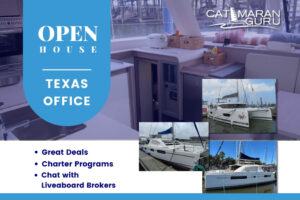
Texas Open House
Join us April 13 – 14 for our open house at our Texas office during the

First-Annual Virgin Islands Boating Exhibition (VIBE)
VIBE – It’s a Destination Boat Show! Join us May 10 – 12 at

For more than 30 years, we have been a part of the catamaran community and created Catamaran Guru™ to encourage and educate all the aspiring sailing out there. We understand the dream of traveling the world by catamaran and created a one-stop-shop to make that dream a reality for you.

- Stephen & Estelle
- Testimonials
Get Started
- Yacht Sales
- Used Yachts
- Charter Management
- Boat as Business Programs
- Seminars & Events

Provisioning for a Boat Trip – Your Checklist!
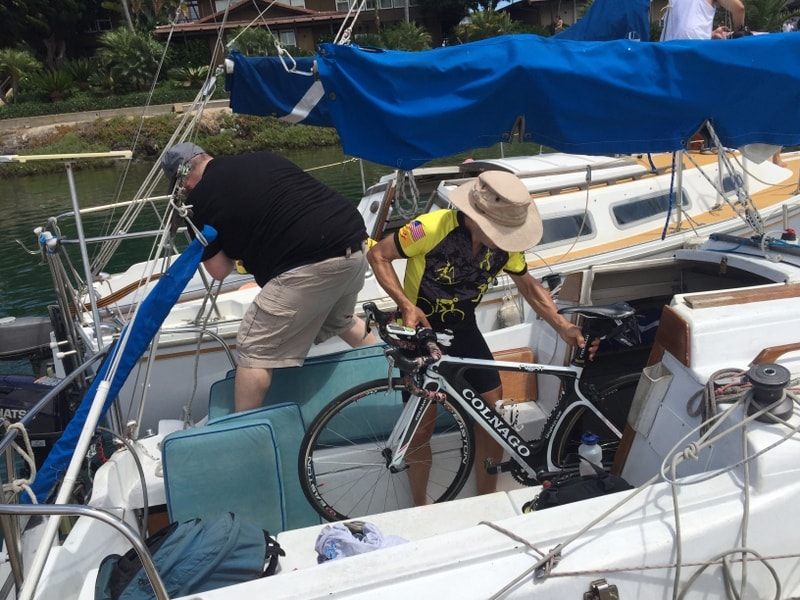
Table of Contents
Provisioning for a boat trip is often looked at as a harrowing task for both new sailors and veterans of the sailing world. Provisioning doesn’t have to be a dreaded or consuming chore! The first thing I do is determine where we are planning to sail.
Depending on your destination, you may need more or less provisions to make your trip safe and comfortable. Certain areas can be a wasteland for provisions, but most destinations are terrific resources for you to restock as needed.
I also suggest researching your destination to discover what is available, the costs, and how much you want to pack onto the boat at the beginning of your trip.
Keep in mind that provisions take up a considerable amount of space, so stockpiling 6 months worth of supplies when you could easily replenish needed items as you go, may not make a lot of sense.
What are the Essentials to Bring on Board
As a basic rule of thumb, I like to bring what I consider the basic essentials for a sailing trip. Ideally, you will include these provisions before any other items that are merely for comfort or convenience. Always try to bring these provisions onboard:
- Bottled Water
- Coffee and Tea (and coffee filters)
- Matches and Lighters
- Oil for cooking (olive, vegetable, corn, peanut, whatever you deem necessary)
- Seasonings (salt, pepper, various spices)
- Cleaning Supplies (all-purpose cleaners, dish soap, hand soap)
- Toilet Paper
- Hand Towels
Provisioning List
Writing out a list of provisions is always fun for me, but some people find it difficult to decide what they should and should not bring. When you head out to stock up on provisions, bring a list to help guide your purchases.
It is especially helpful if you are trying to stick to a specific budget. Bear in mind, fresh foods are fine to have onboard, but they will need to be eaten first or they will spoil. Plan to eat the non-perishables later in the trip.
- Fresh Foods
- Dairy (Cheese, Butter, Milk, and Yogurt)
- Fruit (Apples, Oranges, Pears, Bananas, etc.)
- Green Beans (also string beans and wax beans)
- Dried and Canned Provisions
- Meat and Fish (Anchovies, Sardines, Tuna, Chicken, potted meats)
- Condiments (Mustard, Ketchup, Mayonnaise)
- Fruit Juices
Ice is vital when sailing on boats. You will plow through bags of ice every few days, but most ports will have ice available for purchase.
Provisioning Tips
With experience comes knowledge, but I still pick up new and helpful tips frequently. A great way to save space for food storage is to invest in a vacuum sealer to minimize the amount of space bags take up. A pressure cooker is a fantastic way to prepare meals, but you need to take the time to learn how to use it properly.
I also suggest keeping Power Bars on hand and a supply of candy to satisfy your sweet tooth. Wherever you stop, pick up a few basic items, even if you’re not running low yet, if the item is something that is used frequently and will need to be replaced regularly.
Provisioning comes down to planning and anticipating your needs and the needs of your guests. Having everything you need when you need it is part of the luxury of a vacation, even if it takes a bit of work before you get out on the water!
Want to Know More Provisioning Tips?
Subscribe to Cruising Sea newsletter to receive every two-week the latest post straight to your inbox.
Do you have some tips for provisioning? Would you like to share them by leaving a comment below, I’ll love to know about it!

Daniella has been passionate about travel, the sea, and nature for many years. As a child, she frequently traveled throughout the Mediterranean and continued with her journeys throughout her adult life.
Her experiences have created the desire within her to share her love for traveling with other passionate and adventurers who want to discover beautiful horizons and new cultures.
7 thoughts on “Provisioning for a Boat Trip – Your Checklist!”
This checklist was very helpful! It was very similar to my camping checklist. I usually have a box of non-perishable items in my little camper at all times. I generally restock after every trip. I think I will start doing the same for the boat. I usually have a first aid kit as well, sometimes an extra one, just in case. My mother has always said, if you forget it you will need it every time.
Yes, I agree with you, it is very similar to any checklist:) Usually, every well-maintained boat possesses a first aid kit, so for this, you can be tranquil:)
Thank you for the comment and wish you to sail soon!
Great site i now feel, when it comes to the food and beverage to bring, prepared to sail the seven seas! however you put coffee and coffee beans on the essentials list when that is certainly not an essential for me. Also you put a link explaining what Provisioning is, you might want to consider adding a text definition on the page somewhere. Great job! keep it up!
Just surfing the net and came across your site. Nice site. I am actually planning a little boat trip with my family. defo need to show the Mrs this page and take heed of the advice given Probably end up printing this out make sure we don’t miss out on the provisions, so much we did nt think about! Our Trip will be Thailand, Starting Phucket, going along Koh Phi Phi, similan islands, then on to Penang (Malaysia) from there Samutra and other islands of Indonesia then back up the gulf of Thailand. Any specific advice for that trip appreciated. Will be our first boat trip.
How nice, these places are a real paradise! I am sure will enjoy, especially by boat!
If it’s your first trip, then I suppose you will charter a crewed yacht, which offers all the comfort, you won’t have to worry about the provisioning. However, there are a lot of great sailing tips on my website, you should take a look:) The southeast-Asia page will interest you as well!
Thank you for the comment and I wish you a wonderful sailing trip!
Please don’t hesitate when you’ll get back to share your sailing experience, I’ll be more than happy to hear from you!
Thank you so much Daniella – I will definitely be flagging your website as I am really strongly considering hiring a charter next year. I have read a lot of your articles now and am convinced it is definitely something I would like to try. You make so many good points about being able to replenish as you go and doing research about the location in regards to how accessible certain resources would be. I want to have enough room for all my bikinis and shoes etc. 😉
Nice to see again on my website:)
I am glad you like my articles and hope to see you soon on board!
Thank you for the comment and wish you a great day!
Leave a Comment Cancel reply
By using this form you agree with the storage and handling of your data by this website. *
Sailing Gear Essentials: the Ultimate Packing List (and PDF)
When I first started, I wish I had an overview of what I need right now, and might possibly want in the future. So here's the list with all sailing essentials.
What gear do I need for sailing? You need clothes that dry quickly, deck shoes with good grip that don't leave marks, and multiple layers of clothing. You also want to bring water and sunscreen. Depending on your type of sailing and your role onboard, you need different kinds of specialty gear.
It really matters what sort of trip you're planning. Also, if you're the skipper, you're responsible for bringing a lot of additional skipper & boat gear. I've specified the complete list below for all different conditions and roles.
I've also made a printable checklist that you can download for free.
Download free sailing gear packing list

Interactive Sailing Packing List
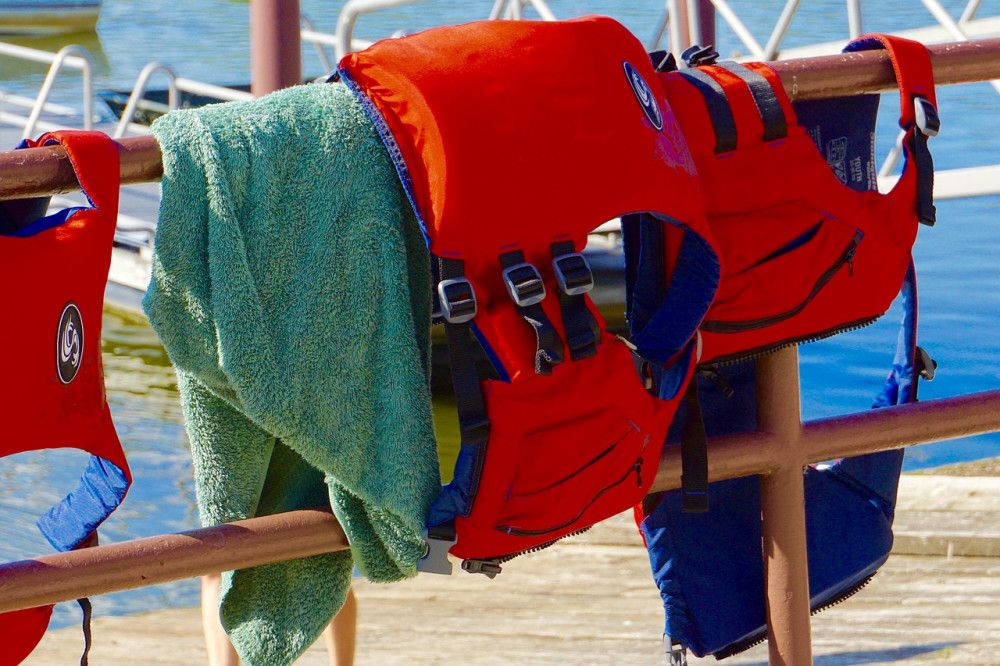
On this page:
Gear essentials: quick summary, essential sailing clothes, skipper gear, gear you need if you own a boat, related questions.
What you need to bring depends on the sort of trip, the trip length, and your role.
I categorize gear into four types of gear:
Clothing - There are some basic rules for clothing, which I'll explain below. But the best way to know what kind of clothes to wear is asking the skipper or sailors that are regulars in the area. Weather conditions on the water are very different from land.
Crew gear - All other personal things like paperwork and toiletries. Only applies for trips of multiple days or international journeys.
Boat gear - Navigation equipment, electronics, and safety gear. Boat gear is always the responsibility of the skipper, so if you're joining as crew, you don't have to worry about this.
Supplies - You always need supplies, and with long trips, this can really add up. But with one-day trips, you don't really need to worry beyond water, since there will probably be restaurants and stores around. However, you never know: a simple trip around the lake can end up in spending the night there. Mechanical breakdown happens all the time, so perhaps you want to bring at least some food and extra water.
Below I'll go into more detail for each of the different gear categories. You'll also find all of these items on the downloadable checklist. But first, let's quickly take a look at the packing list for beginner day-sailors.
What you need to bring as crew on a 1-day sailing trip:
If you're tagging along for a short trip as (beginner) crew, you don't need to bring much. You need to wear appropriate clothes and bring a bottle of water and sunscreen. Appropriate clothes are:
- multiple base layers of clothing that are comfortable and dry quickly
- non-marking deck shoes that provide a good grip like sneakers or boat shoes
- sweater and (sailing) jacket
- sun protection, like a hat or cap, and long sleeve shirts
I'll go into multiple day trips below, but first I want to take a look at the stuff each skipper needs to consider when planning a trip.
Factors that determine the supplies and boat and crew gear
If you're the skipper, you're responsible for the boat gear and any necessary supplies. You need to decide what navigation equipment you need, and how much fuel, food, and what safety gear to bring. To make planning easier, I've created a system for myself.
There are basically three kinds of trips that determine what safety and boat gear I need to bring:
- freshwater trips - not a lot needed besides basic navigation tools
- coastal and offshore trips - more safety gear required by the USCG
- ocean passages - besides more safety gear, also more supplies and tools needed
Freshwater trips - Freshwater trips are the easiest to plan. There isn't a lot of safety gear required by the Coast Guard, and you don't need a lot of supplies or fuel, because there's always a gas station nearby. So no worries here. You just need to bring your basic navigation tools. Something like a compass and marine chart will do fine, or perhaps a chartplotter.
Coastal and offshore trips - For coastal and offshore trips you need to bring a lot more safety gear, especially on larger boats. You'll also want more navigation gear, and you'll need more anchors.
Ocean passages - Ocean passages are the ultimate planning challenge. Besides all safety gear, navigation, and so on, you also need to think about your supplies and bring extra tools. Once you're out there, you're on your own, so you need to be able to do minor repairs yourself.
Make sure to check out my Ultimate Guide to Required Safety Equipment on a Boat . There you'll find a USCG safety gear checklist for all different hull lengths.
Trip length
The second factor that determines required gear is the trip length. Obviously, the longer your trip, the more you'll need to bring.
- short trips (1-2 days)
- extended trips (2 - 14 days)
- ocean passage (multiple weeks)
I mention ocean passage again here because it's usually the longest kind of trip, but it also requires special planning. You need to bring a lot more fuel than on an ordinary two-week trip along the coast because chances are you won't find any gas stations in the middle of the Atlantic.
Also, you need to bring a lot more water onboard, and spare parts for minor engine and sail repairs. With long trips along the coast, you can always find a safe harbor with a store, or request Coast Guard assistance. They will probably be there within a couple of hours at most. But in the middle of the Atlantic, chances are nobody will come for at least a couple of days.
What you need to wear depends on your role and ambitions. If you're just tagging along as crew or a curious landlubber on a sailing yacht, you need to take a good look at your clothes, but you don't need to worry as much about specialty gear. If you're a pro sailor (or want to become one), you need special sailing gloves and wetsuits. And then there are foul weather clothes for heavy weather.
For sailing clothes, the rules of thumb are:
- you want to wear clothes that are appropriate to the climate
- you want to wear multiple layers because the temperature on the water can change quickly
- you always want to bring dry clothing
- wear clothes that dry quickly; neoprene and polyester are great for cold weather, linen is great for warm weather
- wear clothes that can't be caught in lines or winh; no scarfs or shawls, rather a large blanket or a thick coat for when you get cold
Beginner sailing outfit
- in cold weather, wear heavy, thick undergarments made from water repellant materials. Neoprene sailing socks are great, but wool works as well. Always bring plenty of spares.
Professional sailing clothes
- sailing gloves
- boat shoes or sailing boots
- water shoes
- polaroid sunglasses with croakies
- sailing hat, helmsman hat, or cap with retainer clip
- high-quality sailing jacket (inshore, coastal, and offshore jackets all have different linings)
- sailing trousers - this can be a polyester legging, made from wetsuit material, or a UV protective, water-repellent chino
- canvas sailing belt - works than a leather belt in wet conditions
- drysuit for cold weather
Foul weather/offshore clothes
- foulies (heavy weather rain suit)
- ocean trousers or salopettes
Crew gear is stuff every crew member needs to have, including the skipper. The safety gear is the responsibility of the skipper, the rest is up to you.
Safety gear
Each crew member should wear the following safety gear:
- life jacket - also called a Personal Flotation Device (PFD) - if you go sailing regularly, you might want to consider buying your own
- whistle for signaling when you go overboard
- waterproof headlamp for signaling when you go overboard
- For coastal and offshore sailing: harness and tether - clips you to a fixed padeye onboard to stay within reach when you go overboard
Toiletries (for multiple-day trips)
If you're going out for multiple days on end, be sure to bring your the following toiletries:
- toothbrush and toothpaste
- medications and perhaps medication for seasickness
- dry shampoo
If applicable, make sure to bring:
- passport for international trips
- diving certificate
- drivers license
- dry bag - to protect your precious gear
- swimming/snorkeling/diving gear
- fishing gear
Additional gear for multiple-day trips
- sleeping bag
- cellphone and charger
- electronics like an e-reader, tablet, laptop, camera, and chargers
- 12V to DC adapters
- power banks and spare batteries for all electronic equipment
- outlet travel multi-adapters for international trips
As skipper, you need to carry some tools to ensure a safe boat and the general safety:
- Personal Locator Beacon (PLB) to transmit location in case of emergency
- utility knife and marlin spike, or:
- mariners knife (has a marlin spike) - used to work on the rigging, splitting lines, and so on
- sailing watch - A digital sailing watch has at least an alarm, which you need for reminding you to do check-ups on the course, weather conditions, and so on. Most sailing watches also have a digital compass and barometer, which is great as a backup.
- captains log if you use one
- marine binoculars (with rangefinder)
The skipper needs some additional paperwork:
- International Certificate of Competence (ICC) - for international trips only
- USCG skipper's license
- VHF certificate
- sailing guides on the area
- legal paperwork for the boat and captain - like boat registration document, and a photo ID like a driver's license
Boat gear consists of cockpit gear, navigation, communication, and safety gear. For short inland trips, you only need some of that gear. You don't need a lot of navigation equipment since the waters are well mapped and finding your way isn't very difficult. First I'll give you the bare minimum, and then I'll specify each category for longer trips.
The bare essentials:
- boat compass
- marine chart
- required safety gear
- first aid kit
- small tool kit or multitool
- working anchor and rode
Cockpit equipment:
- wind vane and/or handheld wind meter
- Cockpit Mayday procedure card
- compass deviation card
- boat maintenance log
Navigation equipment:
Bring at least one (but preferably two) the following:
- handheld compass
- chartplotter - make sure you bring updated charts
- backup chartplotter - this can also be a laptop, tablet, or even smartphone
- sextant & up-to-date navigation almanac
- marine charts
I always want to bring at least two means of navigation. My favorites are the compass (by far) and the GPS since these are very reliable. I also plan to dive into celestial navigation, since this is a great backup, and it's more accurate than you might think.
You can get a cheap but reliable chartplotter and compass for less than $500 - in total. If you want to learn more, head over to the recommended gear section:
- Click here for my recommended chartplotter
- Click here for my recommended compass
For a complete overview of types of marine navigation, I recommend to check out my in-depth article about it .
Communication equipment:
- satellite phone
- marine VHF radio
- handheld depth sounder
- signaling flags for international waters
Safety gear:
- air horn or whistle
- bosun's chair for rig work
- radar reflector
- flares or LED signaling light
- emergency weather radio
- first aid kit - needs to contain at least
- fire extinguisher(s)
- life raft for offshore sailing
PhillipDoult
Not enough money? Then sign up now https://binomo.com?a=de7617cc9494&t=0
?? ALERT FOR ALL FOOLS! ??
Be one of the first to literally own SHIT coin. Join the SHIT Heads.
Eager to jump right into the pit of idiocy? Presenting American Shit Coin (SHIT) - the epitome of worthless digital trash !
?? Completely valueless? You got it! ?? No use? Indeed, you can bet on it! ?? Entirely for laughs? Without a doubt! ?? Similar to our chosen leaders? Absolutely, you mindless followers!
Join the circus of idiocy and snatch your SHITcoins now! Available on exchanges for all the naive souls who think this is a good idea . Ensure you don’t skip on this unique chance to squander your cash down the drain! ????
How to buy:
https://ibit.ly/IXDxv
P.S. Just having a bit of
Leave a comment
You may also like, 41 sailboat cruising essentials for long trips.
In this post I list the items you are unlikely to have if you have never done bluewater or long-term cruising before. There are some essential safety product and …
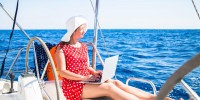
Free Sailing Resources

How Far Can You Sail In One Day?
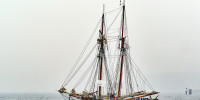
How Much Fuel Does a Sailboat Use?
Own your first boat within a year on any budget.
A sailboat doesn't have to be expensive if you know what you're doing. If you want to learn how to make your sailing dream reality within a year, leave your email and I'll send you free updates . I don't like spam - I will only send helpful content.
Ready to Own Your First Boat?
Just tell us the best email address to send your tips to:
- Bahasa Indonesia
- Slovenščina
- Science & Tech
- Russian Kitchen
Cruising the Moskva River: A short guide to boat trips in Russia’s capital

There’s hardly a better way to absorb Moscow’s atmosphere than on a ship sailing up and down the Moskva River. While complicated ticketing, loud music and chilling winds might dampen the anticipated fun, this checklist will help you to enjoy the scenic views and not fall into common tourist traps.
How to find the right boat?
There are plenty of boats and selecting the right one might be challenging. The size of the boat should be your main criteria.
Plenty of small boats cruise the Moskva River, and the most vivid one is this yellow Lay’s-branded boat. Everyone who has ever visited Moscow probably has seen it.

This option might leave a passenger disembarking partially deaf as the merciless Russian pop music blasts onboard. A free spirit, however, will find partying on such a vessel to be an unforgettable and authentic experience that’s almost a metaphor for life in modern Russia: too loud, and sometimes too welcoming. Tickets start at $13 (800 rubles) per person.
Bigger boats offer smoother sailing and tend to attract foreign visitors because of their distinct Soviet aura. Indeed, many of the older vessels must have seen better days. They are still afloat, however, and getting aboard is a unique ‘cultural’ experience. Sometimes the crew might offer lunch or dinner to passengers, but this option must be purchased with the ticket. Here is one such option offering dinner for $24 (1,490 rubles).

If you want to travel in style, consider Flotilla Radisson. These large, modern vessels are quite posh, with a cozy restaurant and an attentive crew at your service. Even though the selection of wines and food is modest, these vessels are still much better than other boats.

Surprisingly, the luxurious boats are priced rather modestly, and a single ticket goes for $17-$32 (1,100-2,000 rubles); also expect a reasonable restaurant bill on top.
How to buy tickets?
Women holding photos of ships promise huge discounts to “the young and beautiful,” and give personal invitations for river tours. They sound and look nice, but there’s a small catch: their ticket prices are usually more than those purchased online.
“We bought tickets from street hawkers for 900 rubles each, only to later discover that the other passengers bought their tickets twice as cheap!” wrote (in Russian) a disappointed Rostislav on a travel company website.
Nevertheless, buying from street hawkers has one considerable advantage: they personally escort you to the vessel so that you don’t waste time looking for the boat on your own.

Prices start at $13 (800 rubles) for one ride, and for an additional $6.5 (400 rubles) you can purchase an unlimited number of tours on the same boat on any given day.
Flotilla Radisson has official ticket offices at Gorky Park and Hotel Ukraine, but they’re often sold out.
Buying online is an option that might save some cash. Websites such as this offer considerable discounts for tickets sold online. On a busy Friday night an online purchase might be the only chance to get a ticket on a Flotilla Radisson boat.
This website (in Russian) offers multiple options for short river cruises in and around the city center, including offbeat options such as ‘disco cruises’ and ‘children cruises.’ This other website sells tickets online, but doesn’t have an English version. The interface is intuitive, however.
Buying tickets online has its bad points, however. The most common is confusing which pier you should go to and missing your river tour.

“I once bought tickets online to save with the discount that the website offered,” said Igor Shvarkin from Moscow. “The pier was initially marked as ‘Park Kultury,’ but when I arrived it wasn’t easy to find my boat because there were too many there. My guests had to walk a considerable distance before I finally found the vessel that accepted my tickets purchased online,” said the man.
There are two main boarding piers in the city center: Hotel Ukraine and Park Kultury . Always take note of your particular berth when buying tickets online.
Where to sit onboard?
Even on a warm day, the headwind might be chilly for passengers on deck. Make sure you have warm clothes, or that the crew has blankets ready upon request.
The glass-encased hold makes the tour much more comfortable, but not at the expense of having an enjoyable experience.

Getting off the boat requires preparation as well. Ideally, you should be able to disembark on any pier along the way. In reality, passengers never know where the boat’s captain will make the next stop. Street hawkers often tell passengers in advance where they’ll be able to disembark. If you buy tickets online then you’ll have to research it yourself.
There’s a chance that the captain won’t make any stops at all and will take you back to where the tour began, which is the case with Flotilla Radisson. The safest option is to automatically expect that you’ll return to the pier where you started.
If using any of Russia Beyond's content, partly or in full, always provide an active hyperlink to the original material.
to our newsletter!
Get the week's best stories straight to your inbox
- What to do in Moscow City, if you’re not mega-rich
- Moscow after dusk: 10 places to drink, dance, and groove
- 5 things you must do in Moscow in 2018 between football matches (or without them)
- Sandwiched between Moscow and St. Petersburg: How to spend a perfect weekend in Tver
- 24 or 48 hours in Moscow: Where to go and what to do in 2019
This website uses cookies. Click here to find out more.

Your Journey Awaits: Plan Your Next Charter Adventure
Sail away with Yacht Warriors, where seasoned expertise meets exploration. Uncover the unspoiled beauty of destinations like the British Virgin Islands and the Exumas. Join us in creating an unforgettable sailing adventure.
Discover your next charter destination
Dive into our favorite yacht charter destinations and start planning your next adventure.
We offer first-hand advice from destinations our crews frequent, including the British Virgin Islands, Exuma Bahamas, Spanish Virgin Islands, and more.
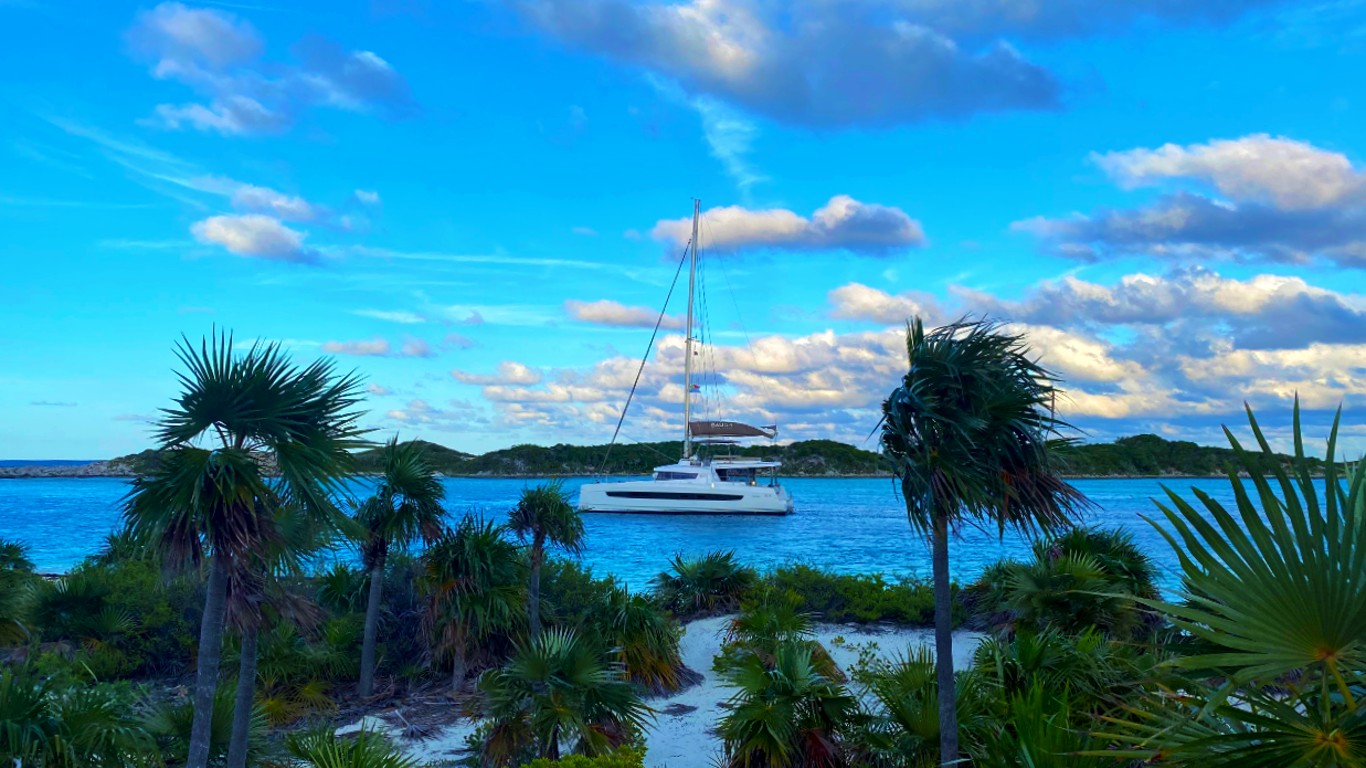
Recent articles from the Yacht Warriors
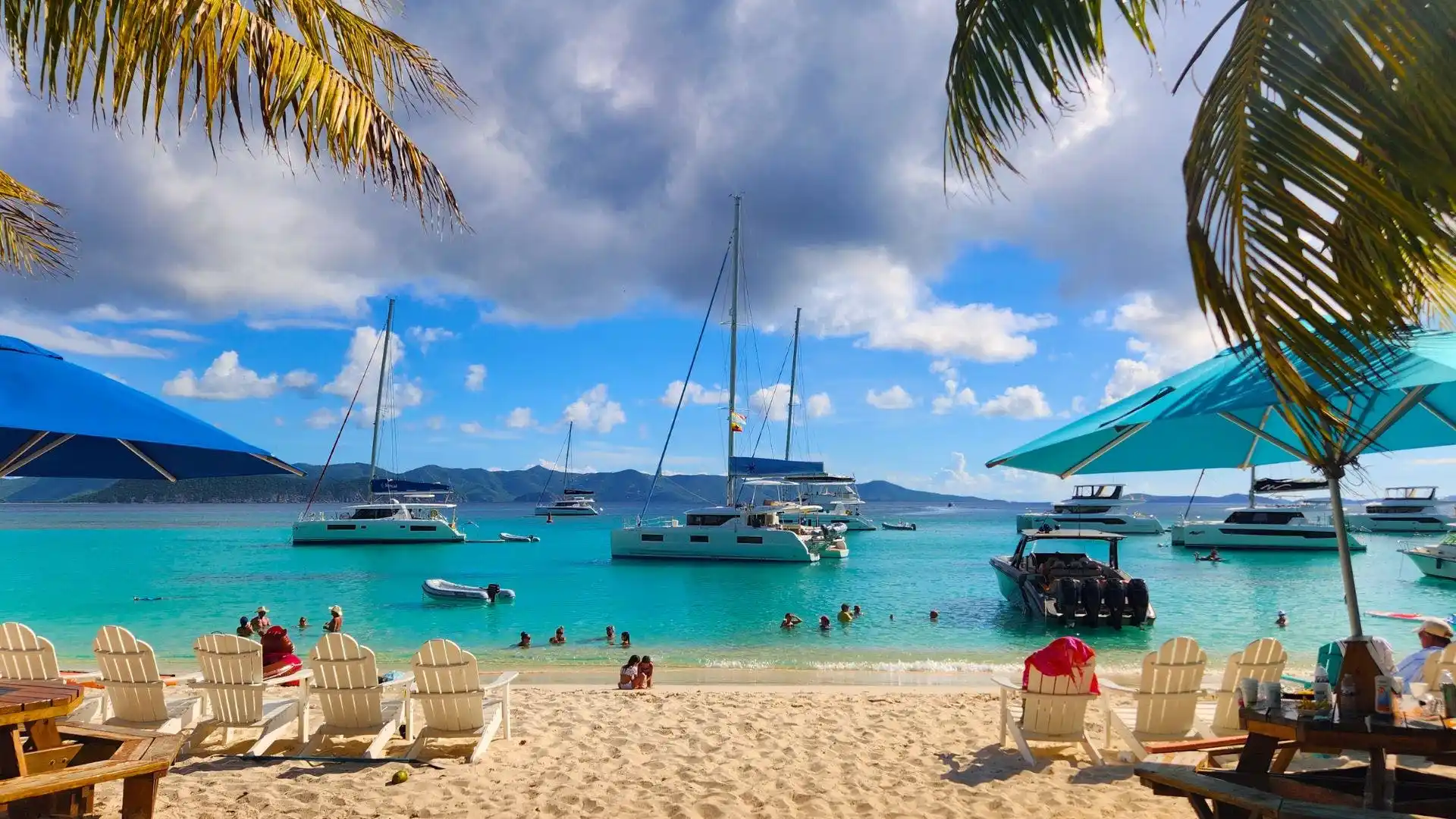
Top BVI Webcams to Check in on the Action
Check out these 8 BVI webcams from some of the most popular BVI bars, restaurants, and hotels such as the Soggy Dollar Bar and Quito's.
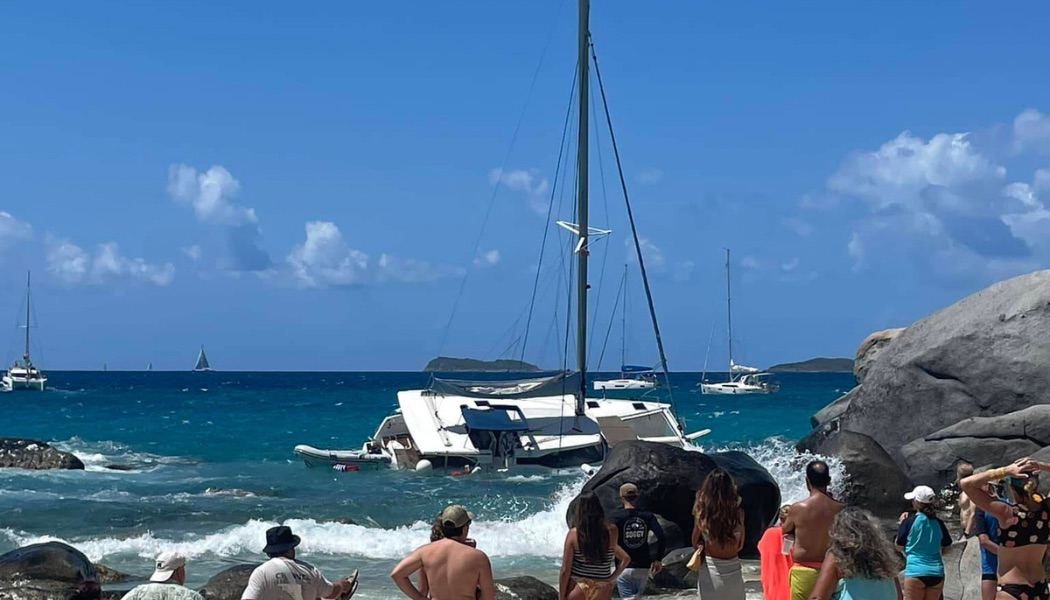
Charter Catamaran Grounding at the Baths BVI Amidst Red Flag
A charter catamaran grounded on the rocks at the Baths BVI amidst red flag conditions.
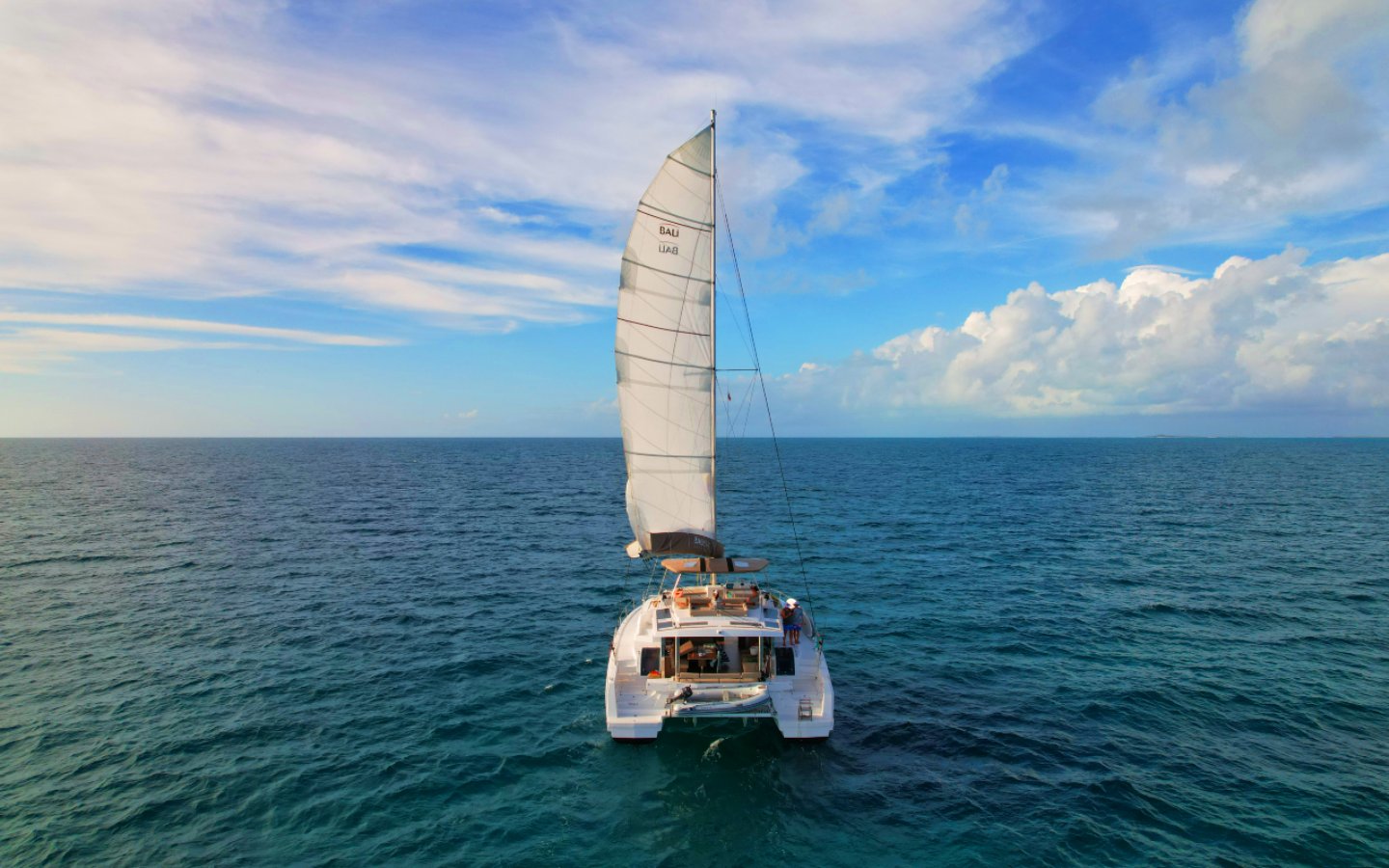
BVI vs Exuma Bareboat Charter: Exploring New Horizons
Explore BVI vs Exuma differences for bareboat charters, from logistics and cruising conditions to unique charter experiences.
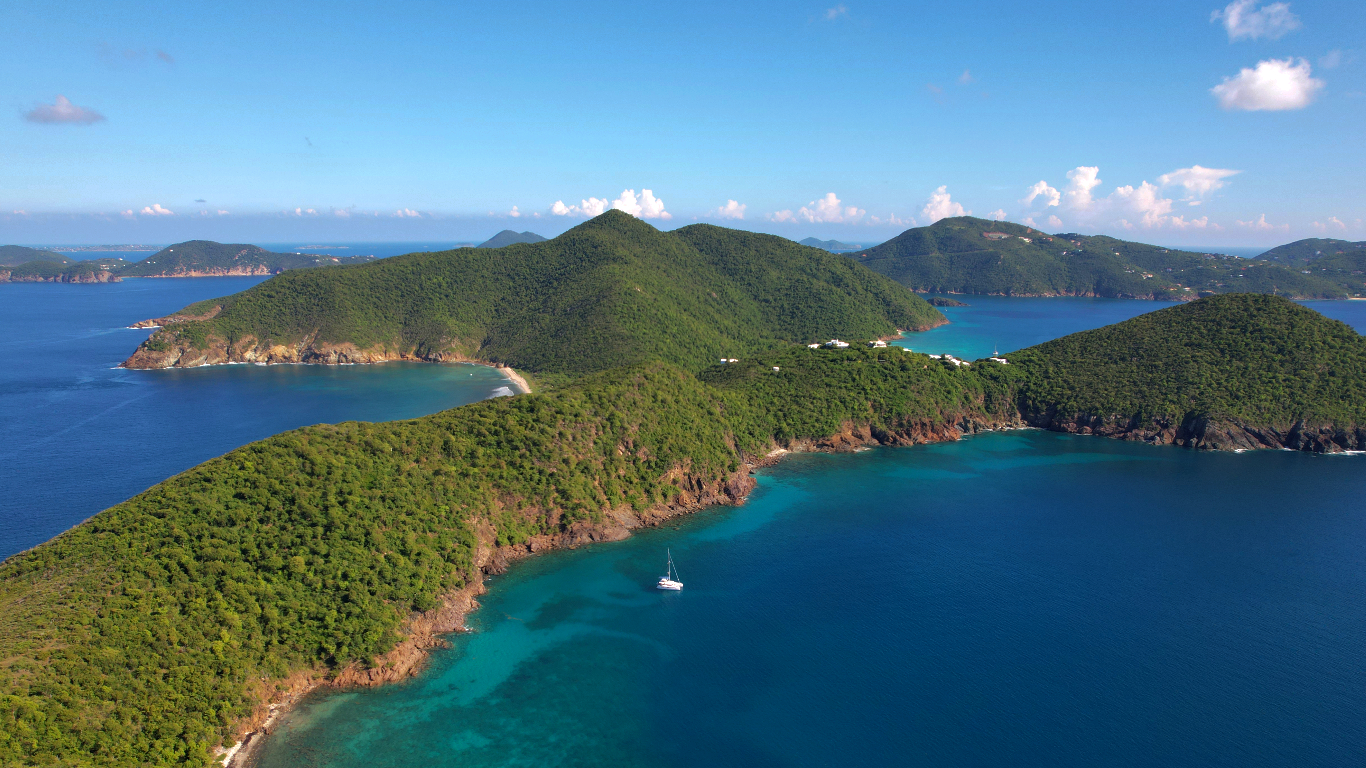
Charter. Beyond.
Get fresh ideas for your next yacht charter trip - insider guides, sailing itineraries, planning tips, and more. Subscribe and receive my free BVI Trip Planning Document.
No extra cost to you
Charter with the Yacht Warriors
Consider booking your next yacht charter trip with the Yacht Warriors, an independent charter broker.
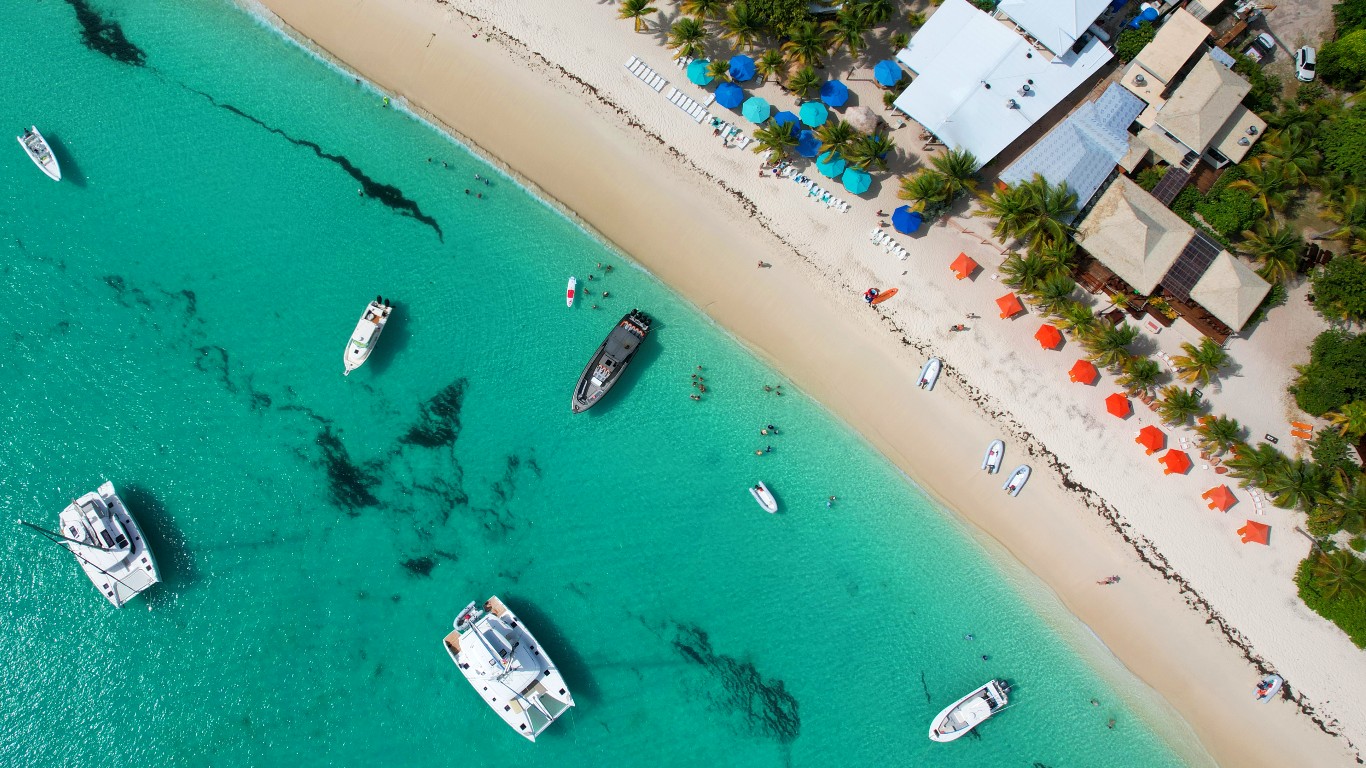
Bend some rods on your next trip
Check out our sailboat fishing guide
Fishing is one of our favorite activities on bareboat yacht charter trips. Check out our sailboat fishing guide for tackle and technique recommendations.
THE 10 BEST Moscow Boat Rides & Cruises
Boat rides & cruises in moscow.
- Boat Rentals
- Scuba & Snorkeling
- Fishing Charters & Tours
- Water Sports
- Stand-Up Paddleboarding
- Surfing, Windsurfing & Kitesurfing
- Kayaking & Canoeing
- Waterskiing & Jetskiing
- Parasailing & Paragliding
- River Rafting & Tubing
- Dolphin & Whale Watching
- Speed Boats Tours
- Submarine Tours
- 5.0 of 5 bubbles
- 4.0 of 5 bubbles & up
- 3.0 of 5 bubbles & up
- 2.0 of 5 bubbles & up
- 3rd Transport Ring (TTK)
- District Central (TsAO)
- Garden Ring
- District Northern (SAO)
- Good for Big Groups
- Good for Couples
- Good for a Rainy Day
- Budget-friendly
- Good for Kids
- Hidden Gems
- Honeymoon spot
- Good for Adrenaline Seekers
- Adventurous
- Things to do ranked using Tripadvisor data including reviews, ratings, photos, and popularity.
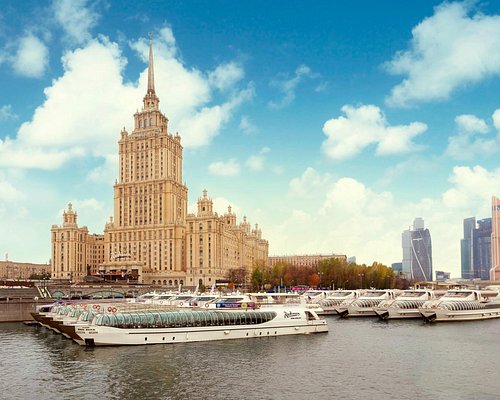
1. Flotilla Radisson Royal

2. Moscow River Boat Tours

3. Sup-Club

4. Akvanavt Diving Centre

5. Diving Center Crocus City Oceanarium

6. CheapRussia Tours
7. Kite School Kiteclass

8. SUP Center
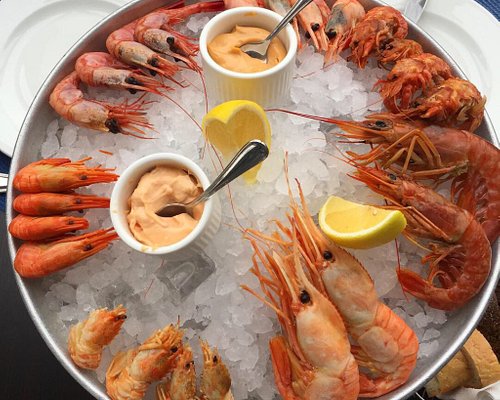
9. Erwin. Reka
11. Easy Russia Tour Guide
12. Lovely Russia Tours

13. Capital River Boat Tours - Moscow Centre

14. Alfa Centr
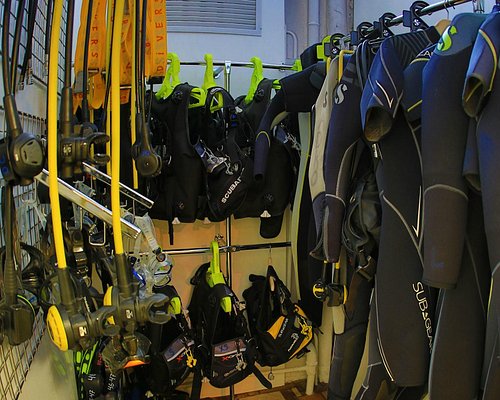
15. Diving Club Divers
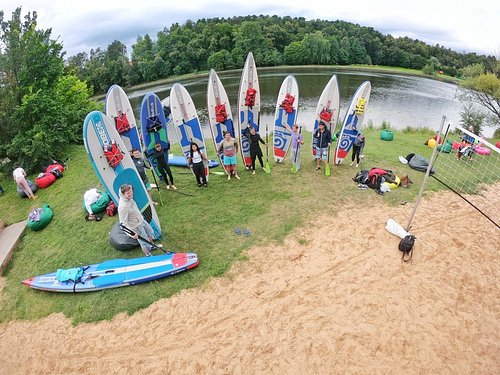
16. Sup Outdoor

17. MORE MOSCOW
19. Soho Sailing Style

20. Diving Center Crocodile

21. Mosparokhodstvo
22. Dive-Project

24. Kosinskiy Children Marine Club

25. Kayak Moscow
26. DIVECLUB CHE

27. FLOW Moscow

28. Moswake

29. Morskiye Volki

30. S-cruises
What travelers are saying

- CheapRussia Tours
- Easy Russia Tour Guide
- Lovely Russia Tours
- MORE MOSCOW
- Insider Moscow Tours
- Flotilla Radisson Royal
- Moscow River Boat Tours
- Capital River Boat Tours - Moscow Centre
- Diving Center Crocus City Oceanarium
- Skip to content
- Skip to checklist
The Cornell Lab of Ornithology builds the eBird global platform for communities and partners around the world to advance data-driven science, education, and conservation.
Alaska eBird Checklist S169502868
Sharing links, additional details, share this checklist with other participants' ebird accounts..
Manage My Contacts
Are you submitting a complete checklist of the birds you were able to identify? Yes Learn More
- Observers: 1
- Duration: 1 hr, 24 min
- Distance: 14.56 mi
Checklist Comments
Observations, harlequin duck, surf scoter, barrow's goldeneye, common merganser, marbled murrelet, pigeon guillemot, common murre, short-billed gull, glaucous-winged gull, pelagic cormorant, double-crested cormorant, exotic species.
Exotic species flags differentiate locally introduced species from native species.
Naturalized : Exotic population is self-sustaining, breeding in the wild, persisting for many years, and not maintained through ongoing releases (including vagrants from Naturalized populations). These count in official eBird totals and, where applicable, have been accepted by regional bird records committee(s).
Provisional : Either: 1) member of exotic population that is breeding in the wild, self-propagating, and has persisted for multiple years, but not yet Naturalized; 2) rarity of uncertain provenance, with natural vagrancy or captive provenance both considered plausible. When applicable, eBird generally defers to bird records committees for records formally considered to be of "uncertain provenance". Provisional species count in official eBird totals.
Escapee : Exotic species known or suspected to be escaped or released, including those that have bred but don't yet fulfill the criteria for Provisional. Escapee exotics do not count in official eBird totals.
Public information for Sensitive Species is restricted due to potential harmful impact to these birds. Site-specific information is visible only to the observer and eBird reviewer(s) for the region. We encourage you not to share specific location information about this sighting via social media, public websites, or email listservs. Learn more about Sensitive Species in eBird.
Change portal
If you click "Change Portal", this checklist will be assigned to the portal you select below. This will allow you to switch to a portal-specific protocol if desired.
Hide this Checklist
Hiding a checklist will exclude the taxa on it from all forms of eBird output that show a location (including bar charts, maps, and arrival/departure tables), but the observation will still be accessible to you, and will appear on your lists.
It will be considered not public in the eBird database since we cannot approve bird records without accurate location information.
Although we understand that some checklists need to be excluded from eBird's public output due to privacy concerns or other issues, we strongly recommend against this unless absolutely necessary.
Are you sure you want to hide these observations?
Submit another for...
Small Boat Harbor, Seward US-AK 60.11728, -149.43596, Kenai Peninsula Borough, Alaska, US on Sat Apr 20, 2024
Small Boat Harbor, Seward US-AK 60.11728, -149.43596, Kenai Peninsula Borough, Alaska, US
Another location near Small Boat Harbor, Seward US-AK 60.11728, -149.43596, Kenai Peninsula Borough, Alaska, US on Sat Apr 20, 2024
Another location near Small Boat Harbor, Seward US-AK 60.11728, -149.43596, Kenai Peninsula Borough, Alaska, US
Sat Apr 20, 2024
- Different location and date

IMAGES
VIDEO
COMMENTS
Home Charters Helpful Files & Resources Charter boat checklist. Charter Boat Checklist Tweet. When you arrive at the base for your charter, unless you have the luxury of a crew — in which case you will just step on board and cast off — you have some work to do to make sure your cruise will go smoothly. Here is a checklist of the most common ...
Docking/mooring/anchoring can be the most stressful time of your whole cruise - so do all you can to set yourself up for success. Extra line and tools. Know what your supplies are on board - and ask the charter company for more if you think the supplies are too thin. Fuel and Water levels and expected consumption.
Two swimsuits are more than enough as you'll be mainly swimming, snorkeling, and soaking up the sun. 4 T-shirts fast drying material with long sleeves to protect your arms and shoulders from the sun. 3 Shorts and light pants. For women, a skirt, a light beach dress, and a pair of beach pants will be great. Underwear.
In order to make your bareboat sailing charter as convenient as possible, there are things you might need to carry alongside the normal provisioning. Some of these items include a 12-volt DC to 110/220-Volt AC inverter with USB outlets (for charging the phone, camera, etc.), European to American-style plug adapter, iPod and audio jack cable, as ...
Download Transfer Details. Download Safety Briefing. Download Nautical Control Panel. Download SOS Radio Call. Sailing Charter - Checklists free of charge for download. Checklists for your next boat trip - Crew List, Ship's Logs, Transfer Details, Food Provisioning Checklist, Boating Resume and other charter documents.
The boat documents include the technical inspection certificate, a permit to sail in the area, a crew list and the boat's insurance (concession document). Require the charter company to provide you with a contact person in case any problems arise. 9) Engine. Open the engine compartment (most often found under the stairs to the saloon).
Checkout Checklist. Bareboat charters begin with two briefings: the chart briefing and the boat briefing. This checklist covers most everything that will be covered during the boat briefing. And then some. Inspect: Have a look. Example: verify the contents of the separator bowl are clear not cloudy. Check: Take a look inside.
Our bareboat yacht charter guide for beginners has everything you need to know to learn how to take your first sailing trip. Yacht Warriors. ... Charter Companies Bareboat Charter Guide Boat Briefing Checklist Skipper's Safety Brief Mistakes to Avoid BVI Sailing Itinerary BVI Redlined Areas BVI Weather Resources Fishing Guide. Newsletter.
Sailing Packing Checklist. Bareboat Charter, Gear / January 9, 2015 by TJ / 6 Comments. Updated 30-Nov-2019. I use this checklist when I am packing for a sailing trip. I go through the checklist to remind me about everything I might bring; everything I don't need I just check off and move on. If I've needed it once it's on the list; this ...
Dinghy pump in case it goes flat. Drop it in the water and start the outboard engine. Lock to tie off to the dock. Engine start procedures and operation. Music system - make sure you can connect with bluetooth. Fresh water tanks. Top off before you leave. If two tanks, how to switch them once one is empty.
(Please remember there is no smoking inside our charter boats.) No fresh fruits with pits, corn on the cob, potatoes, apples or pears are allowed. Canada may ban other fruits depending upon conditions. What to take and what to provision on a bareboat charter vacation. Anticipation begins to build from the moment you book your bareboat voyage.
Boat shoes - you definitely do not need these. I think most people that wear boat shoes have never been on a boat. I'm always barefoot when we are on the sailboat. Quick dry towels - most charter companies don't provide beach towels, so plan to bring your own. Since they might get multiple uses every day, we like quick dry options.
NWE's Bareboat Charter Checklist. Firstly, try and pack as light as you can. Soft-sided luggage is best for easy storage. The yachts are outfitted with all the bedding and towels you'll need, but you will need to bring clothing, provisions and personal gear. ... Your charter yacht includes a TV monitor, DVD player and DVDs, AM/FM/CD stereo ...
There are three things that you as charter captain must know and complete before you depart the dock: a technical checkout, a chart briefing and a weather check. Not only will this information help make the vacation better, it'll keep the crew safer. Below we've compiled a pre-departure check list for captain's of charter boats to help ...
Understand the boat's reefing procedure. Sails. Hoist the main a few feet to ensure it goes up and down freely. Unfurl of the head sail a couple of turns to check it furls in smoothly. Understand how the winches and clutches work. Turn the helm to ensure it works freely. Identify the location of the emergency tiller.
Always try to bring these provisions onboard: Bug Spray. Bottled Water. Coffee and Tea (and coffee filters) Ice. Matches and Lighters. Oil for cooking (olive, vegetable, corn, peanut, whatever you deem necessary) Seasonings (salt, pepper, various spices) Cleaning Supplies (all-purpose cleaners, dish soap, hand soap)
Other gear: 1 anchor for inshore. at least 2 anchors for offshore (preferably 3 - 2 storm anchors) tool kit for minor repairs on rigging, sails, and engine. multimeter for checking the wiring. full tank of fuel. spare parts (plugs, fuses, etc.) heaving line 50'-70'.
Pre‐Charter Sailboat Check List www.PortsByBoat.com Below items are listed in order and can be safely run through within 30 minutes. ... Sailing gloves Verify proper toilet paper is available (biodegradable) ... PortsByBoat Pre-Charter Checklist Created Date: 6/24/2010 10:46:08 PM ...
Walking tour around Moscow-City.Thanks for watching!MY GEAR THAT I USEMinimalist Handheld SetupiPhone 11 128GB https://amzn.to/3zfqbboMic for Street https://...
Surprisingly, the luxurious boats are priced rather modestly, and a single ticket goes for $17-$32 (1,100-2,000 rubles); also expect a reasonable restaurant bill on top.
Fishing is one of our favorite activities on bareboat yacht charter trips. Check out our sailboat fishing guide for tackle and technique recommendations. Embark on unparalleled yacht charter experiences with the Yacht Warriors. Discover handcrafted journeys, expert advice, and seamless booking services for your next sailing adventure.
Explore the scenic and historic attractions of Moscow from the water with the best boat tours and cruises. Enjoy the views of the Kremlin, the Cathedral of Christ the Savior, and the Sparrow Hills on a relaxing or informative boat ride. Or, spice up your trip with some water sports and activities in Moscow. Find out more on Tripadvisor.
Hiding a checklist will exclude the taxa on it from all forms of eBird output that show a location (including bar charts, maps, and arrival/departure tables), but the observation will still be accessible to you, and will appear on your lists. ... Small Boat Harbor, Seward US-AK 60.11728, -149.43596, Kenai Peninsula Borough, Alaska, US on Sat ...
On this map you can see the details of the longest and most classic of the Flotilla Radisson boat tours: 2. Companies that do boat tours on the Moskva River. There are many companies that do cruises on the Moskva River, but the 4 main ones are: Capital River Boat Tour Company (CCK) Mosflot. Flotilla Radisson.